Independent Study
This class offeres upper division undergrads a chance to explore non traditional media and time-based concepts in art. The approach is simultaneously theoretical and technical, combining hands-on exercises with reading. Projects are assigned in the following areas: Conceptual Art, Performance, and Environmental Installation.
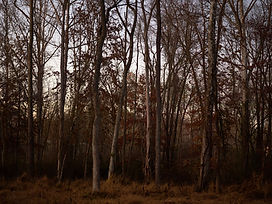
Lianne Milton
Dusk
2020. 24x32 inches. Archival Pigment Print. The woods near my parents' home in Northern Virginia. The lines of the trees remind me of family lineage. But it also conveys blood lines and how the lived experiences and memories of my family’s history and their ancestors are passed down from generation to generation.

Hong Huo
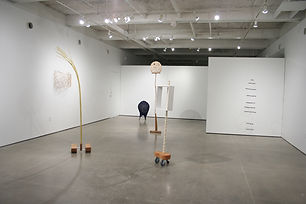
Teresa Audet
Self/Portrait
Installation view of MA Exhibition, Self/Portrait

Elizabeth Sheeler

Caitlin Mary Margaret Brainard
100 Days V.III (live) for Salt Lake City Performance Festival
30 minute performance for livestream.

Kayla Bauer
Installation detail of I Left My Heart...
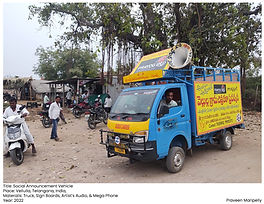
Praveen Maripelly
Social Announcement Vehicle
Place: Vellulla, Telangana,India Materials: Truck, Sign Boards in Telugu, Artist's Audio, and Megaphone Year: 2022
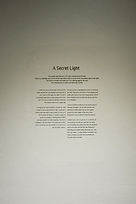
Ashley Goodwyn
This is the story of one of 15 secret installations placed in the Madison area. Some of the stories of the installations were placed in the wall of the gallery. A Secret Light, On a white wall there is a dim light coming from the wall. There is a clothing rack in front of the wall and a shelf of shoes to the immediate right of the light. The shelf is wooden and looks as if it is leaning against the wall. The clothing rack is metal and filled with clothes. I LOVE true crime and escape rooms and this made me feel like I am playing a starring role in one. There is this huge clue right in front of everybody’s eyes and so many people don’t even see it. It’s such a euphoric feeling to hold that information inside every single day. The day the art was installed, I showed up, even though the store was closed so that I could see it happen, and that night it was so hard for me not to tell my family all about it. I swore to keep it a secret, so instead of chatting about it (like I normally would), I’ve been keeping a “secret art installation” journal where I document every time I think a customer has discovered a clue that it isn’t exactly what it seems. We had a group of teenage girls come in to browse the other day, and in the midst of their giggling and selfies with some of our most unique pieces, one of them wandered over to check her phone near the art installation. I held my breath wondering if she would notice it. Although teenagers can be self-centered, she seemed incredibly observant as she walked around the outer edges of the store, more interested in the architecture than the clothing. I walked over to her to ask her if I could help her find anything, and she just said that she really loves buildings and seeing how they are designed and constructed and that she was thinking of becoming an architect when she grows up. And then she asked. I couldn’t believe somebody was finally bringing it up and I felt my breath and thoughts leave my body.
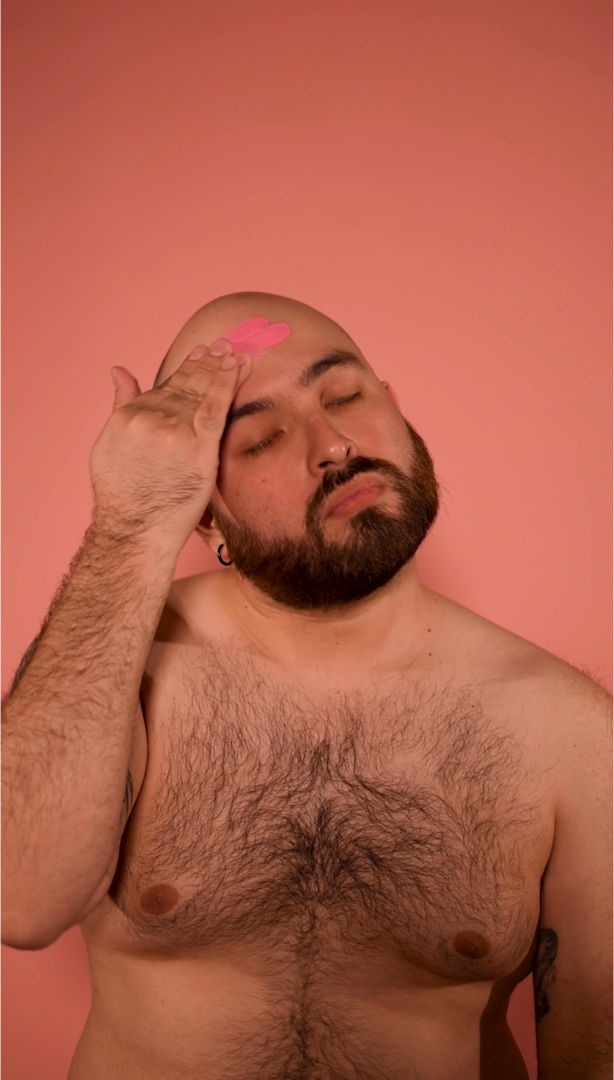
Jorge Escobar
I Had a Crush on Ryan
This is a video still taken from my single-channel video piece "I Had a Crush on Ryan" (2021). The still is from the beginning of the piece where I begin smearing pink paint on my forehead in front of the pink backdrop as part of the performance for the screen. The performance in its entirety features me gradually covering myself in pink paint as I recite different names who I feel played a part in my coming to terms with my queerness as I grew up.
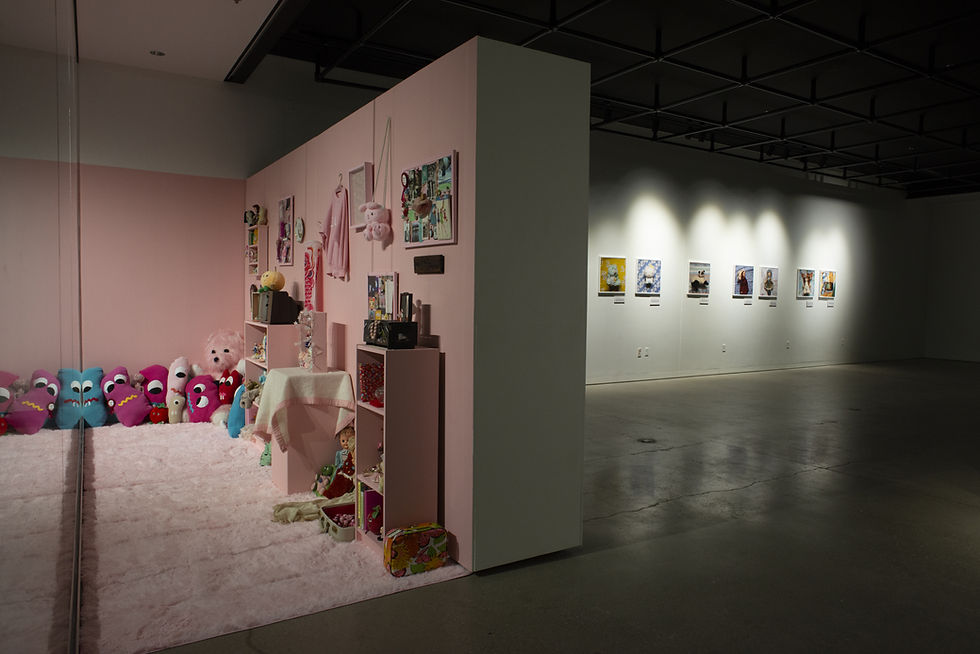
Kayla Bauer
Stay with Me
Installation view of the exhibition Stay with Me. Site-specific installation and archival pigment prints.
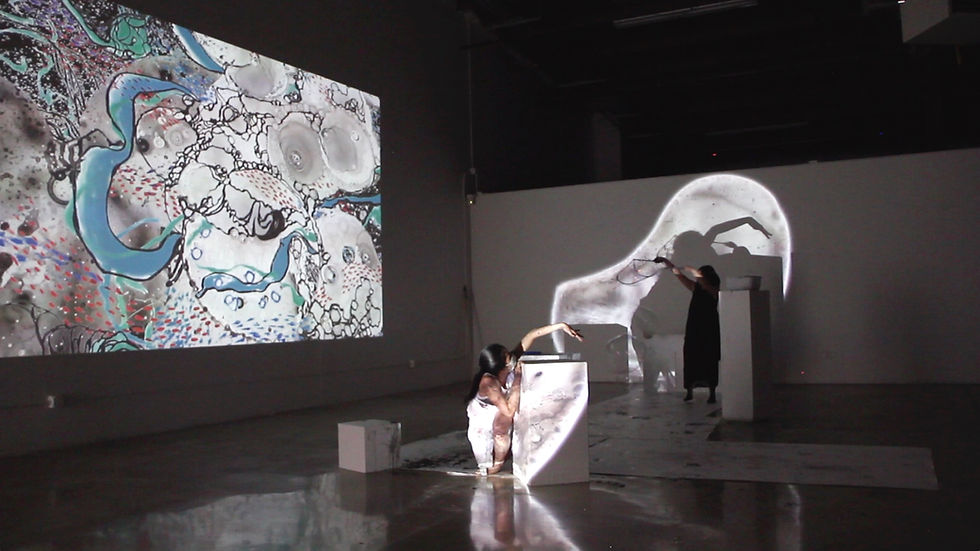
Hong Huo
Flow
This is an image of the show Flow. The work in the image is a performance I did with Yaqi Wu on site, with the installation includes projection mapping of animation on walls and pedestals. The show was in the Art Lofts Backspace Gallery of the Art Lofts Building from March 22nd-26th.
.jpg)
Lianne Milton
“Birth Canal,” Miami Beach, Florida. 2021. Lianne Milton’s MFA Qualifier Exhibition: Between Dark and Dawn: A Personal Exploration of the Maternal Spirit. It is a personal photographic exploration of an altered temporality and generational linearity of the maternal spirit. Through a dual narrative, the photographer reveals a fundamental and powerful human experience.

Chang Liu
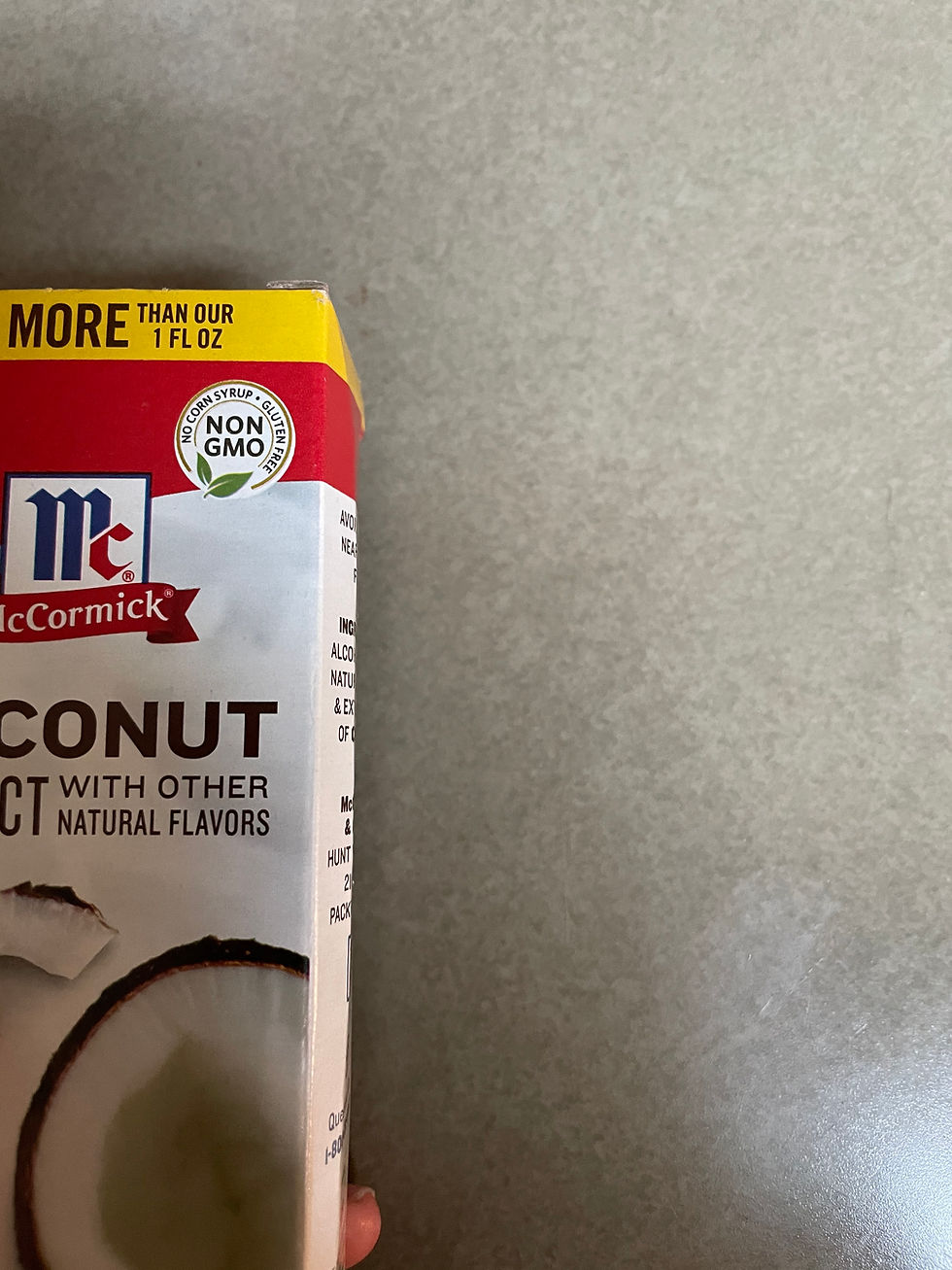
Elizabeth Sheeler
This image was taken on an iPhone while non visually reading a label.
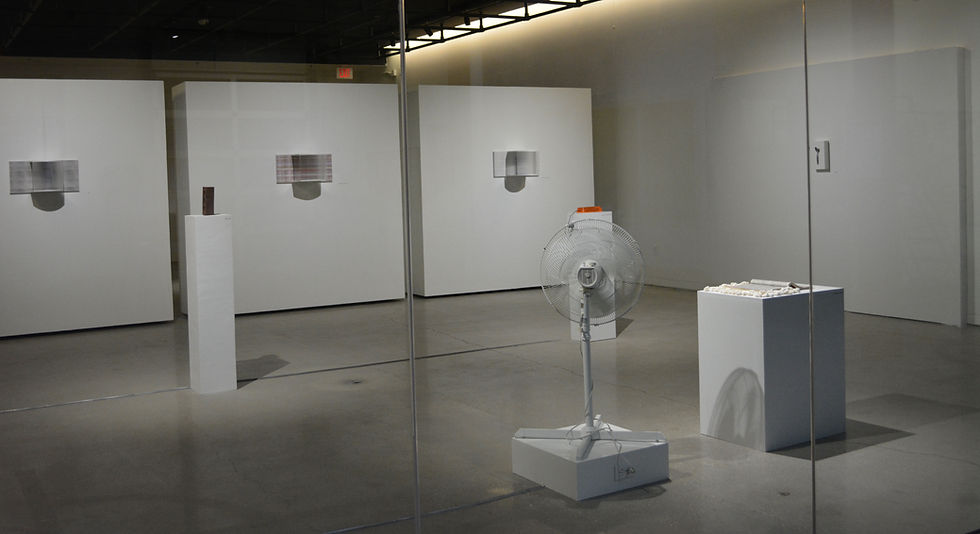
Ashley Goodwyn
IRL
This is an image of the show irl. The works in the image are: Phone Book, Brick, (608) 259-6382, Spoon, Air Freshener, Peanut Butter, VHS. The show was in the Art Lofts Gallery of the Art Lofts Building from March12th-19th.

Jeff Chelf
Dispute the Watershed
Derek Kiesling and Jeff Chelf haul ice out of Lake Monona for the February 2021 performance, Dispute the Watershed. The performance was in partnership with Winter is Alive and The Clean Lakes Alliance.
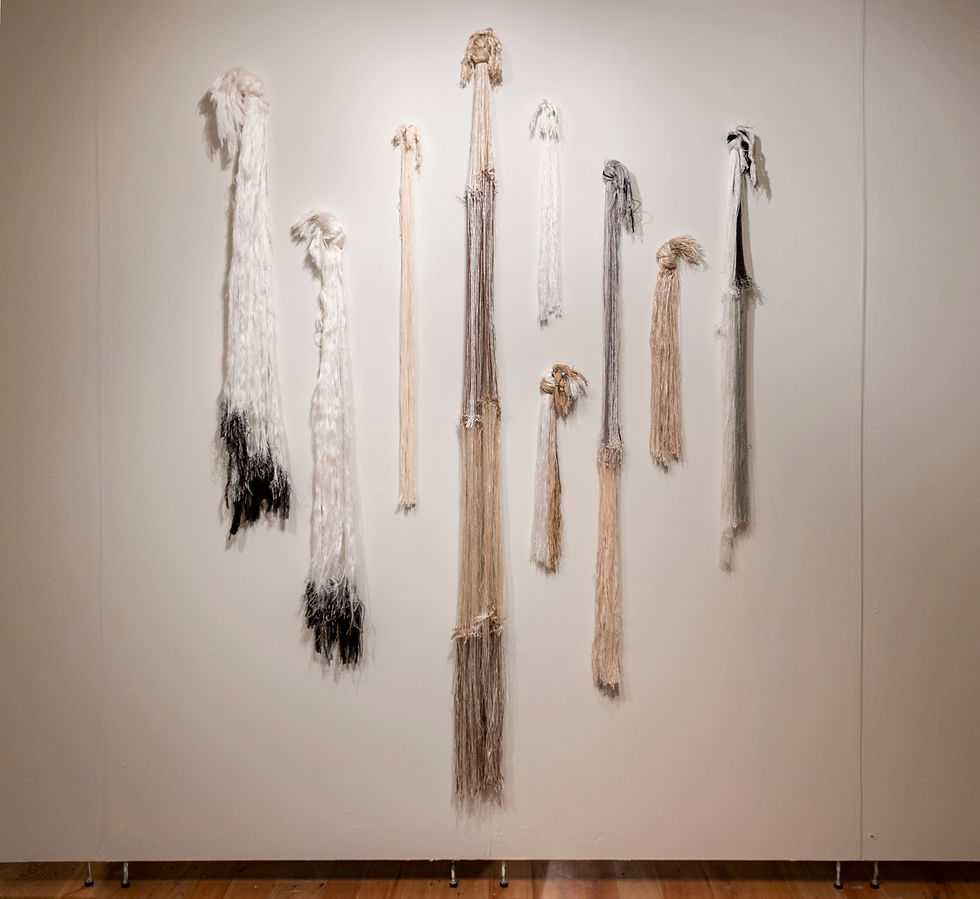
Amanda Thatch
Loom Waste/Thrums, variable dimensions; Tencel, silk, cotton, and other threads leftover from weaving, 2021

Hannah Schelb
Daffodil, Porcelain Ceramic, vinyl, 2021. Floor Installation of a Life-sized full body self-portrait of the artist on a blue vinyl cutout.
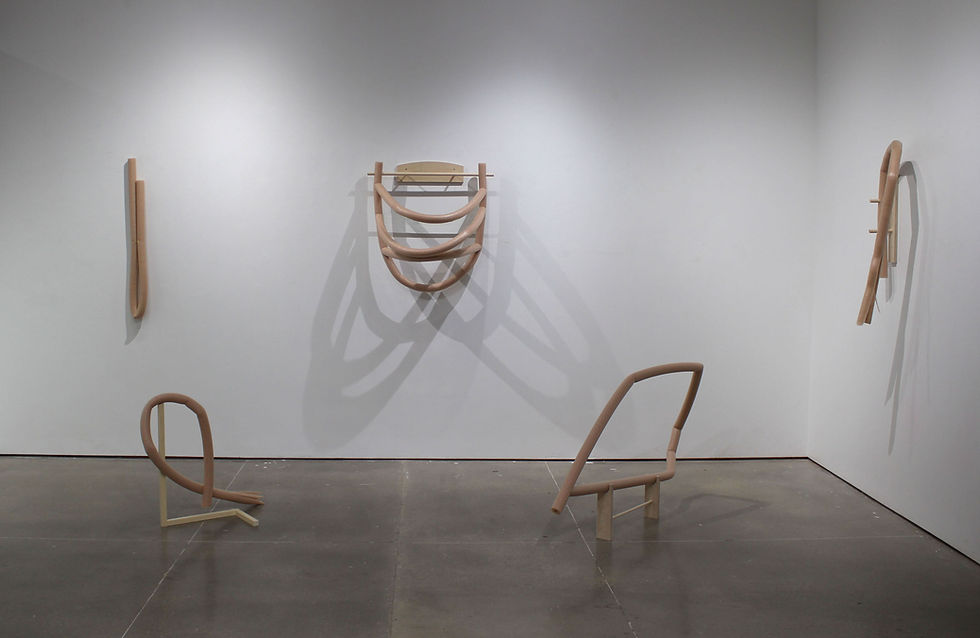
Emma Senft
Points of Contact
Pipe insulation, wood, brass wire. This is an installation test of an ongoing series of sculptures.

Jorge Escobar
"Holding on to you" (2021)
Archival pigment print. This image features me and my ex-partner interlocking our hands in the morning. This work showcases this intimate moment between two men or a moment that is not seen as often. This image is a representation of queer love and intimacy.

Hong Huo

Kayla Bauer
Chinatown Shop Window, San Fransisco
Archival Pigment Print, variable sizes, 2021.

Ashley Goodwyn
Humm in a Hall
Hyperaware presents photos of hidden installations throughout the Art Lofts. These interventions were installed throughout the space on November 29th, 2021, and may not have been noticed. The installations alter the surroundings creating a surreal experience of the area. If detected, this could cause the passerby to question their physical surroundings. Potentially asking themselves: Is what I am seeing happening? Did someone make this, and if so, why? Their awareness of the peculiarity might be heightened for the rest of the day, bringing them to realize other oddities; Forcing a new perspective of the world around them. Living in the digital era, we are accustomed to questioning information given to us by new media. But we are not used to cross-examining things we see with our own eyes. I invite the viewer to find the installations and start questioning.

Teresa Audet
Story
Installation, 2021. In this video, the artist is telling a story and weaving a basket, but instead of the story you hear the sound of waves. The installation features a rocking chair in the gallery and invites the viewer to sit with the video of the artist and rock to the sound of waves and the visuals of weaving.
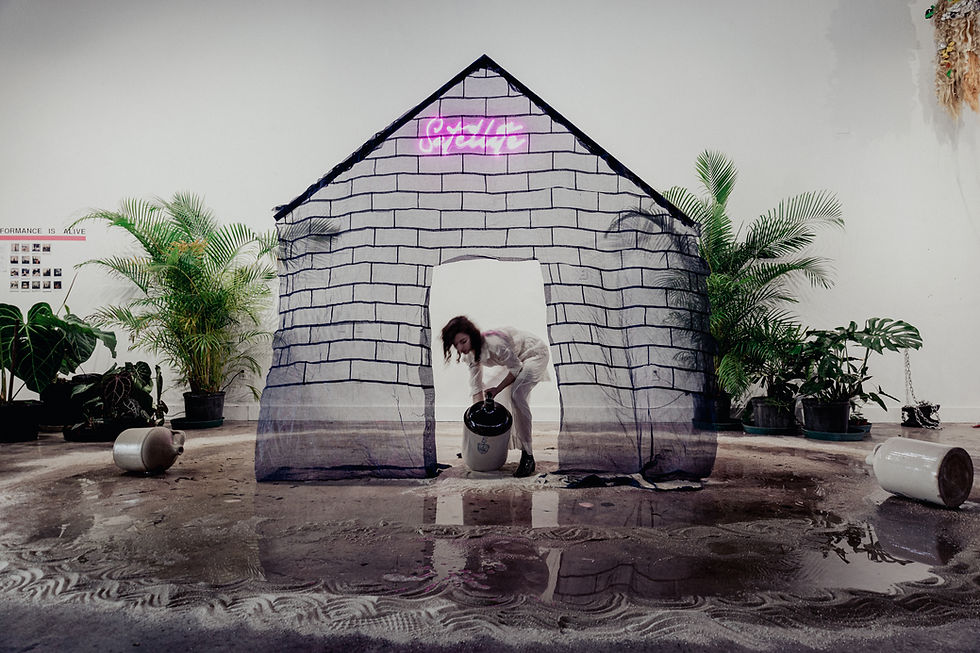
Caitlin Mary Margaret Brainard
for the love of god
Live performance. Duration: 20 minutes. Three sand rings are punctuated by three vessels. In the heart of the installation is a sheer fabric that hangs on a wooden frame to resemble the facade of a blue. Audio plays in the background, filling the space with a whirling combination of storm sounds and an audio track of news coverage as the 2020 derecho swept across Iowa. The news track announces each new high of wind gusts recorded, the anchor’s voice becoming more and more nervous, and finally the storm hitting the news station. In the performance I have two phrases which I say repeatedly, punctuation my navigation around the perimeter of the installation. I am speaking slowly but loudly. As I speak, I make direct eye contact with members of the audience, engendering a very personal delivery. Sometimes they look away, but often they hold my intense stare. I walked a full circumference of the circle, saying: I believe that we will change. I believe that we will change. I believe that we will change. Yet I am afraid. And I agonize. I then stop at the first outermost vessel, and tip it so that water starts pouring out. My phrase shifts to: I believe that I will change. The shift from "we" to I" is maintained when a vessel is in my hands, but I repeat the phrase as steadily as before. I lift the vessel and eradicate the harsh lines of sand, totally revoking and semblance of clear separation as I walk the circle again, slowly pouring out water and saying “I believe that I will change.” I return the vessel to where I picked it up, moving inwards more towards the haus. I begin again, saying “I believe that we will change.” I repeat this process until the last vessel, taking extra care and time to draw out the moment with a much smaller circuit. I pour the water slowly at the heart of the home, tornado sirens piercing my ears and everyone else’s as the audio track peels violently to a close. I end the work gazing out.
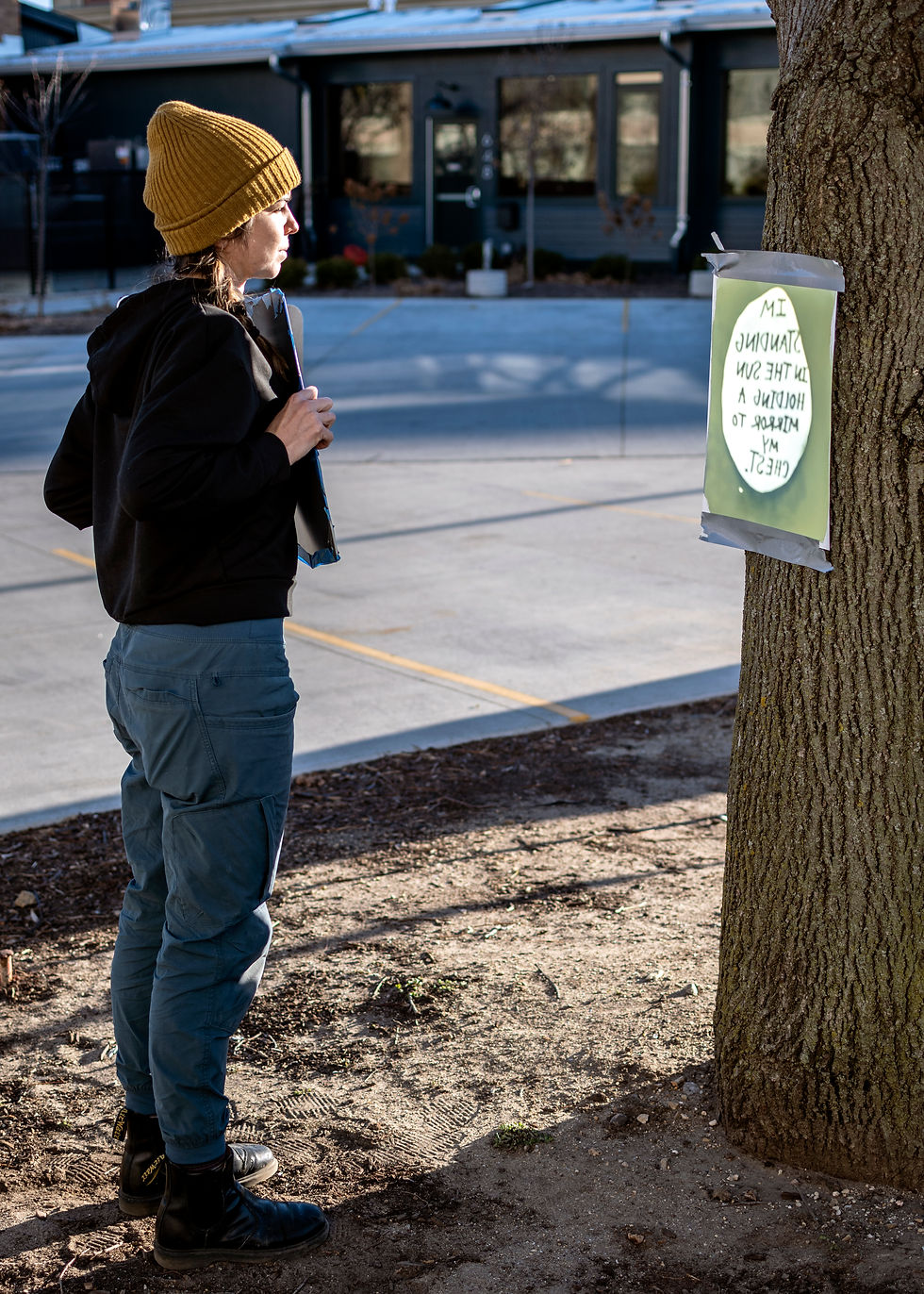
Carolyn Spears
Standing in the Sun
digital photograph, 34” x 24”, 2021. The artist is standing in the sun holding a mirror to their chest, reflecting sunlight onto a photo-sensitive piece of paper taped to a tree in front of them, developing an image of the reflection onto the paper.

Lianne Milton
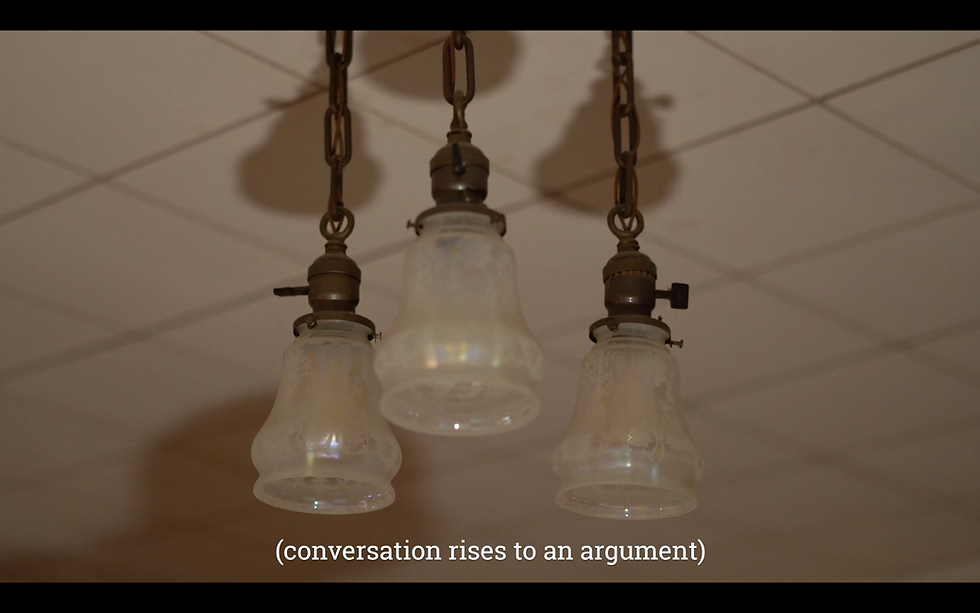
Megan White
Subtitled
This image is a video still from my ongoing project, "Subtitled." The project's text is sampled from 14 films and assembled into seven chapters. The subject is a visual and audible exploration of the female-presenting experience through my own lens.

Reggie Liu
1993
Video, VR Goggle

Elizabeth Sheeler
.jpg)
Ashley Lusietto
Fell Into the Honey
In my MFA exhibition "Fell Into the Honey," I found inspiration in ancient funerary processes, The Sorcerer’s Apprentice, and the memory of receiving a box of brand new dolls in the mail as a child. This body of work made a twisted fairytale of my slow-burning nostalgias, set in a fantasy where the characters playfully blur the lines of alter-ego, inner child, feminine divine, and self portrait. In my cathartic reimagining of a lingering childhood, death becomes a catalyst for healing and preservation. To “fall into the honey” is euphemistic for dying. That sickly sweet liquid amber with its eternal shelf-life has been used for thousands of years in burial practices. Ancient honey-embalmed corpses laid to rest in tombs remain well preserved today. In my work I use honey metaphorically—to sweeten the taste of bitter remembering and to embalm the selves of the past.

Noel Ash
Dishes humanize the task of mother. Very few of us do not grapple with these objects in some way. All but the hideously spoilt have a relationship with the kitchen. Mine is mostly positive. It is the kingdom where I reign. Yet, at times, it seems to rule me. I get behind, or maybe my family gets ahead. Things pile up.

Sean Clute
Political Influence
This sculpture is about the influence of lobbyists on our politicians. Many of the negative environments we live in started with paying off politicians. They affect the status quo to benefit their investor. This at times are at the expense of the people they represent. The spark to this project was Mitch McConnell, Kentucky Senator and Senate Majority Leader. You can clearly see how much comes into play with him. For the sake of communicating to my audience, I opened it up to any politician. This situation is not isolated with Mitch McConnell, nor with the Republican Party, where many interpretations could lead to. The polarizing demeanor of the Politician to the lobbyist is like a wolf in sheep’s clothes. His appearance does not match his drives.

Jodi Robertson
now around the corner, past the bathroom, and the kitchen
This piece is of a tufting gun wall tapestry. Its intent is to act as a signage to help people find there way to a table. It is part of a bigger installation that highlights domestic spaces and the objects that reside within them.

Max Puchalsky
Closed (from Anomalies)
This image, Closed (from Anomalies), was gathered through the practice of randonauting: using a quantum random number generator to derive a set of coordinates and then journeying there to document anomalies. Starting from my home on the east side of Madison, I built a chain of attractor-points by generating each successive coordinate from inside the last. I paired this rigid adherence to the algorithm with a highly intuitive search for perceived anomalies at each site. In my adventures, I came across many spaces previously unknown to me despite their vicinity to my neighborhood, and found that I arrived at each locale with my senses heightened and a kind of radical presentism akin to mindfulness. Advocates of randonauting claim this methodology can help break us out of behavioral loops and discover new reality-tunnels. I hope that viewers’ endeavor to make meaning out of these seemingly disparate juxtapositions mirrors my process of exploration and image-making.
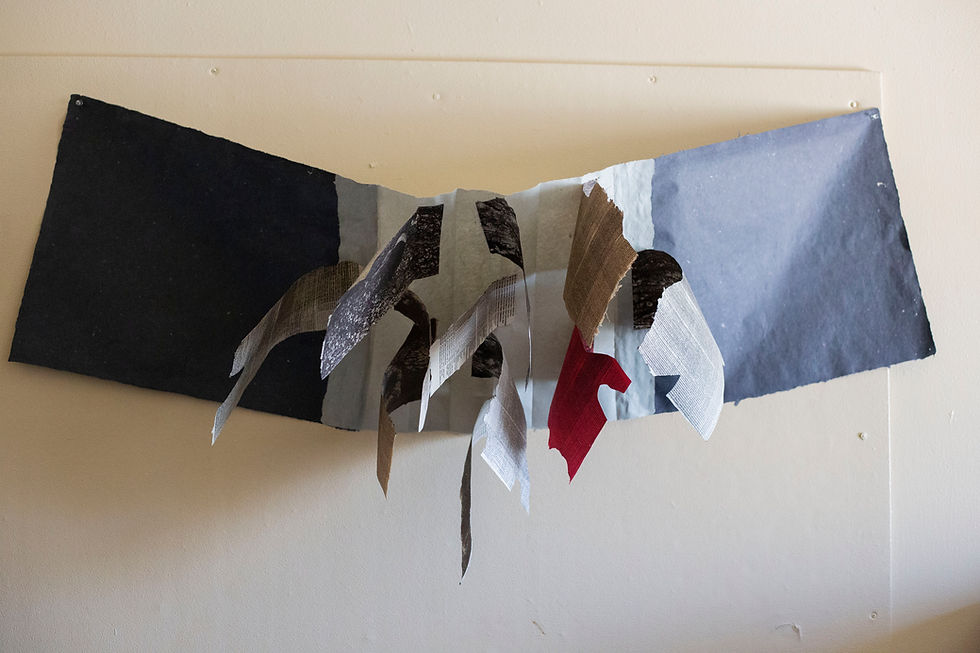
Henry Obeng
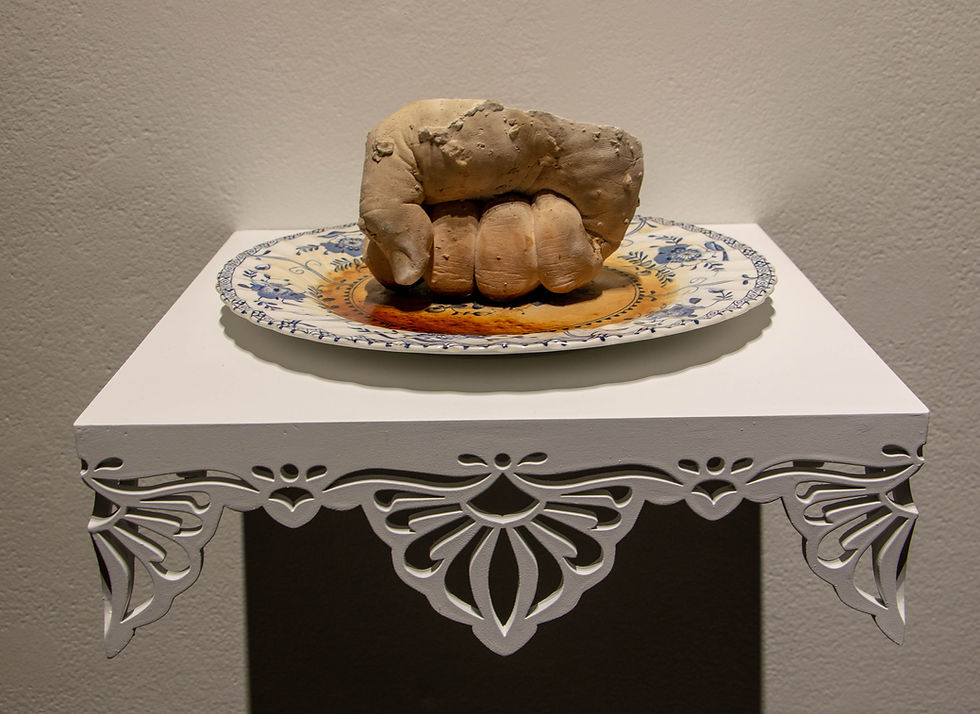
Kel Mur
You caught him in a fragile place.
You caught him in a fragile place (plaster, coffee, latex paint, plate from artist's childhood home, board; 2020) is part of a body of work recently shown in Kel Mur's MFA exhibition titled heirloom which concentrates on the permeability of the body and psyche in the domestic environment. In this particular piece, a plaster cast of a hyper-masculine fist pounds into the china but is not strong enough to break it. Simultaneously, the materiality of the plaster is altered by its absorption of the coffee it sits in. The plate stands in for the private domestic sphere as well as an individual's family dynamic while the coffee illustrates how our daily habits shape who we are. This work asks us to observe what we have inherited from our surroundings and explores the tension between nature and nurture.
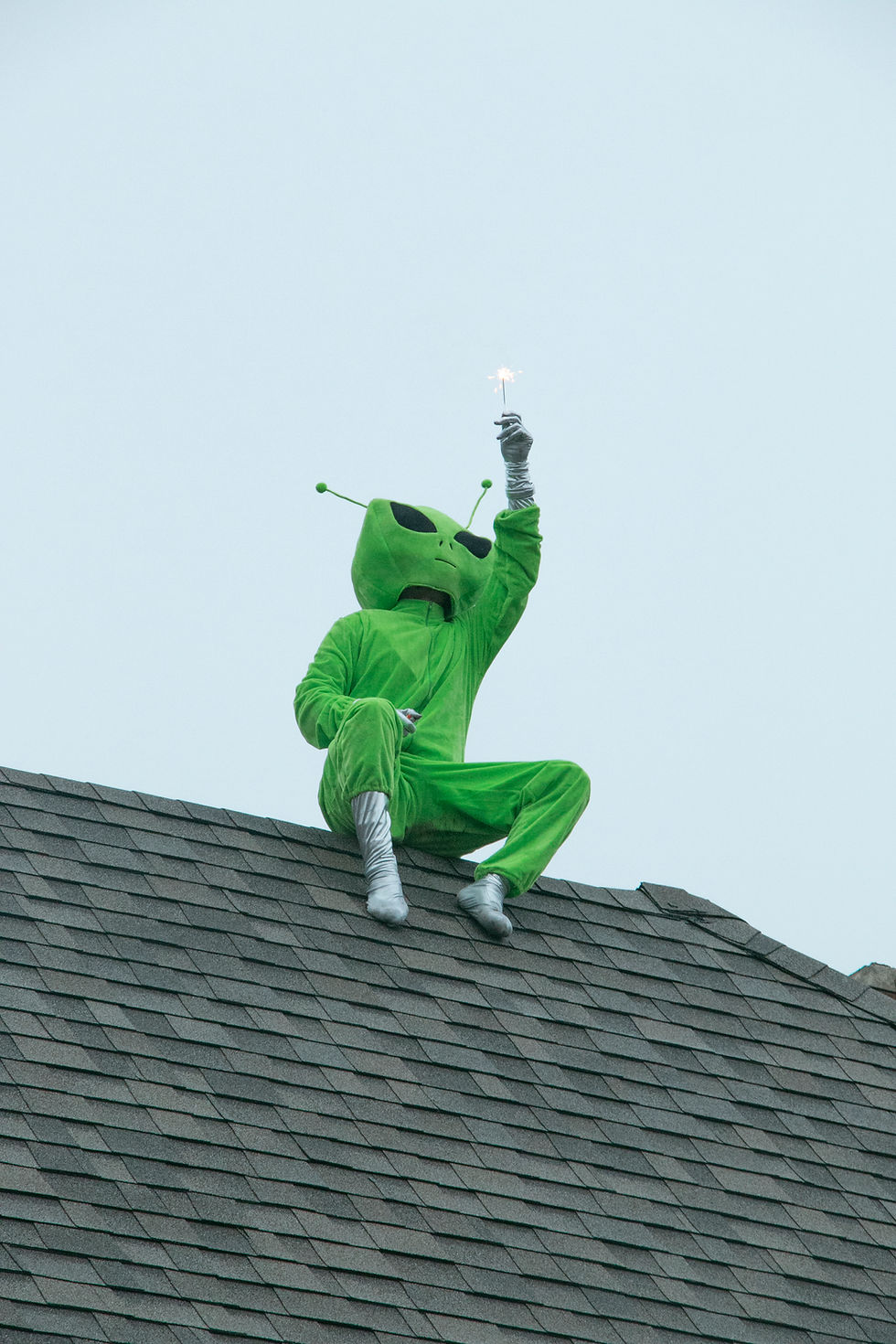
Yoshi Asai
Unidentifiable Friendly Object
This is a still image from my recent video piece, Unidentifiable Friendly Object, in which I wander around the empty Madison with my sculptures during this Corona virus outbreak in the alien costume.
.jpg)
Anwar Floyd-Pruitt
Absurd Answers are laser cut and painted cardboard abstractions, inspired by the illustrations of classmate Josh McMahon. Each of the the 8 works, which measure no less than 15 inches on its shortest side, reinterprets and magnifies a single square inch from McMahon's 2015 coloring book, also titled Absurd Answers.
.jpg)
Hannah Schelb
“Limes, Bell Pepper, Orange Juice and Mayo” is one of a series of images from Fridge-ception. Each image depicts an unfired porcelain sculpture of a refrigerator which is placed in the refrigerator it is sculpted from. The idea was to encapsulate the repetition of revisiting the same place twice, looking for a change from before, hoping to find something appetizing. This piece was made for and inspired by The Crust Bucket Collective’s Fridge Door Exhibition, which is a traveling exhibition that will be displayed on the refrigerators of different hosts with online receptions held at each location.
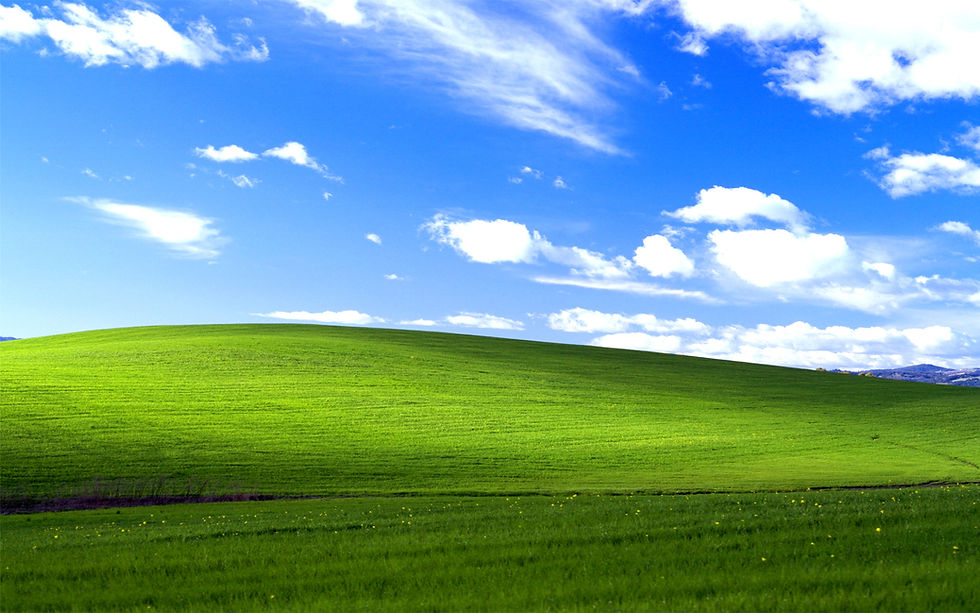
Conley Clark
Bliss is the default computer wallpaper of Microsoft's Windows XP operating system. It's estimated that billions of people have seen the picture, possibly making it the most viewed photograph in history.

Ashley Goodwin

Amanda Thatch
Fell/Fall, Cotton and Tencel yarns handwoven on digital Jacquard loom, approx. 30x30 inches. The term for the working edge of the fabric on the loom while weaving is known as the fell.

Hannah Schelb
Fragile Armor, 2020. This is a formal dress made from bed sheets adorned with porcelain beads linked together with metal jump rings.

Kayla Bauer

Chloe Simmons
Passing Through is a single channel video work in six vignettes that incorporates found copyright free animations, text from Wikipedia, and the artist's own iphone footage.
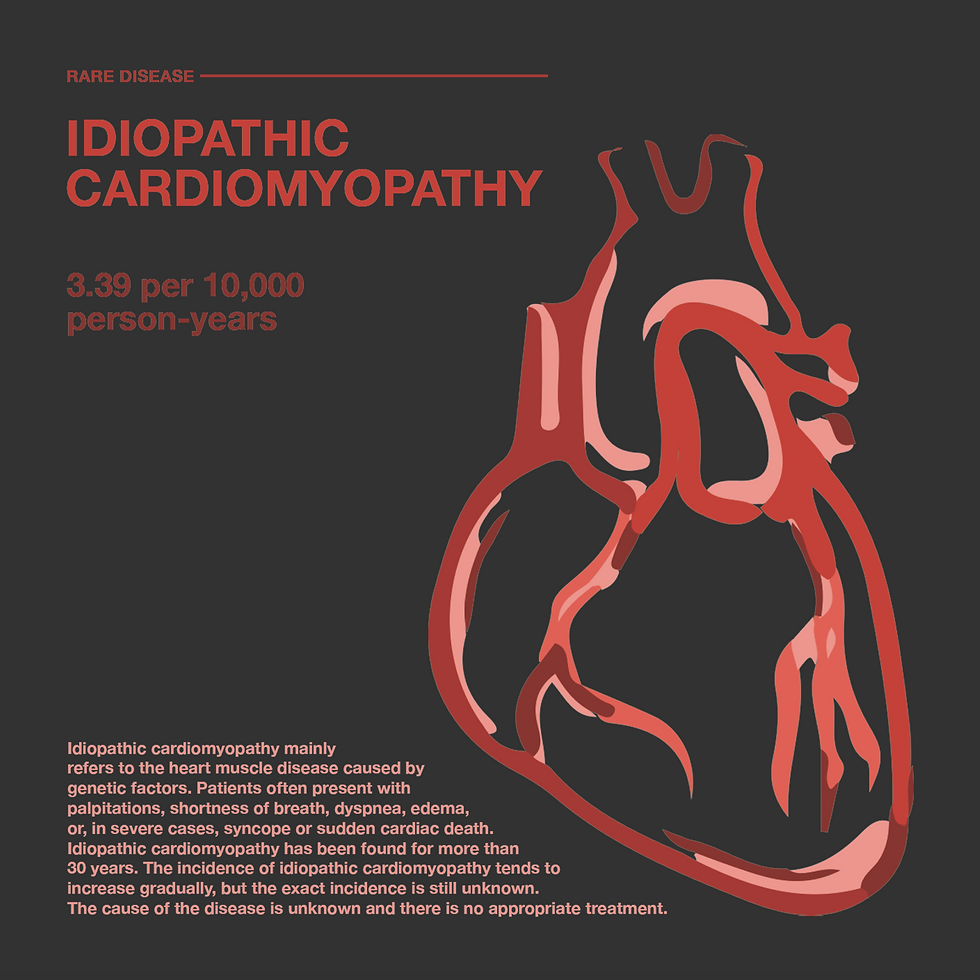
Mo Chen
Disease
An Interdisciplinary design project which examines a new design display form with a concept of “Rare Disease”. The aim of the project is to draw people's attention to the rare disease through innovative design expressions.
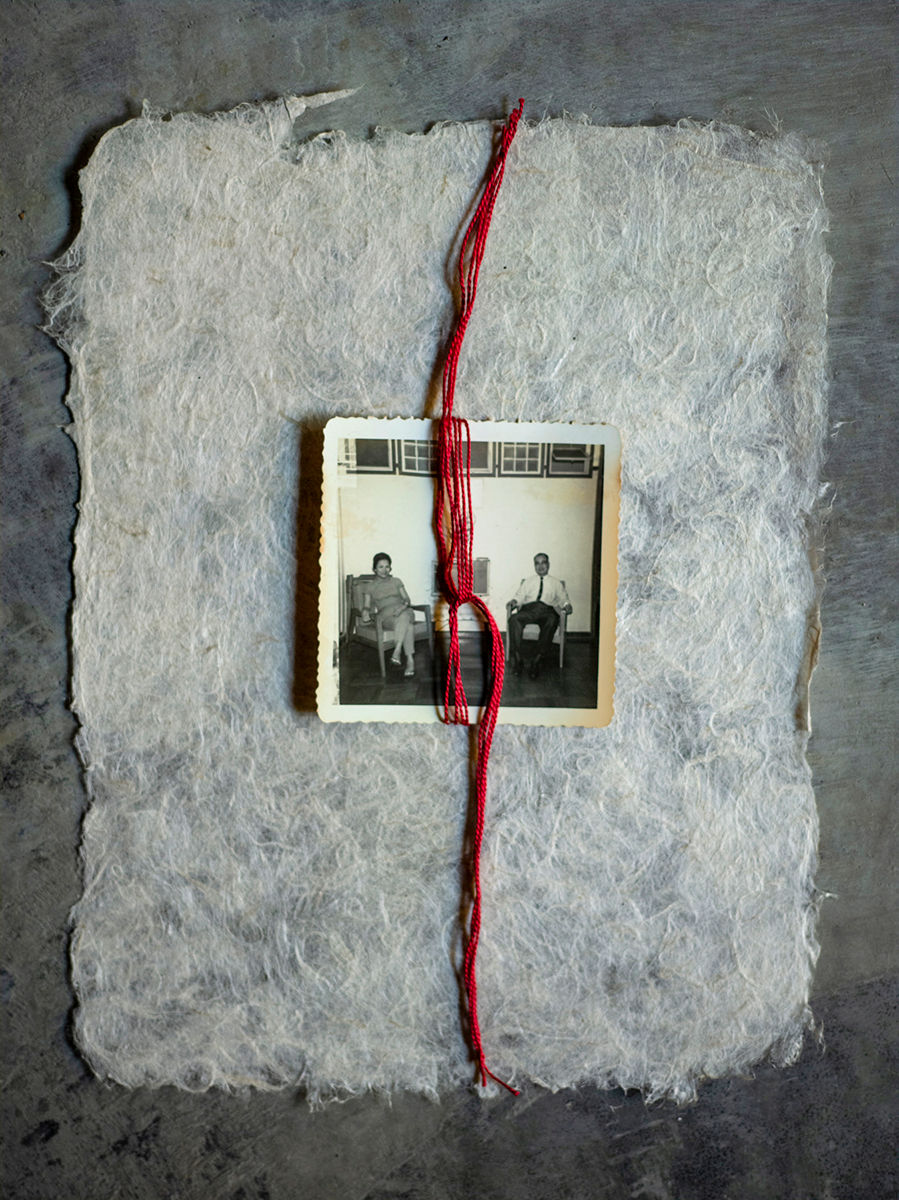
Lianne Milton
Grandmother (Poa Poa)
Archive photo wrapped with red embroidery thread on handmade Kozo paper by Lianne Milton, MFA Qualifier project, working title Grandmother (Poa Poa), which explores her family history, generational memory, and the Chinese diaspora. © Lianne Milton 2020. Reprinted with permission by the photographer.
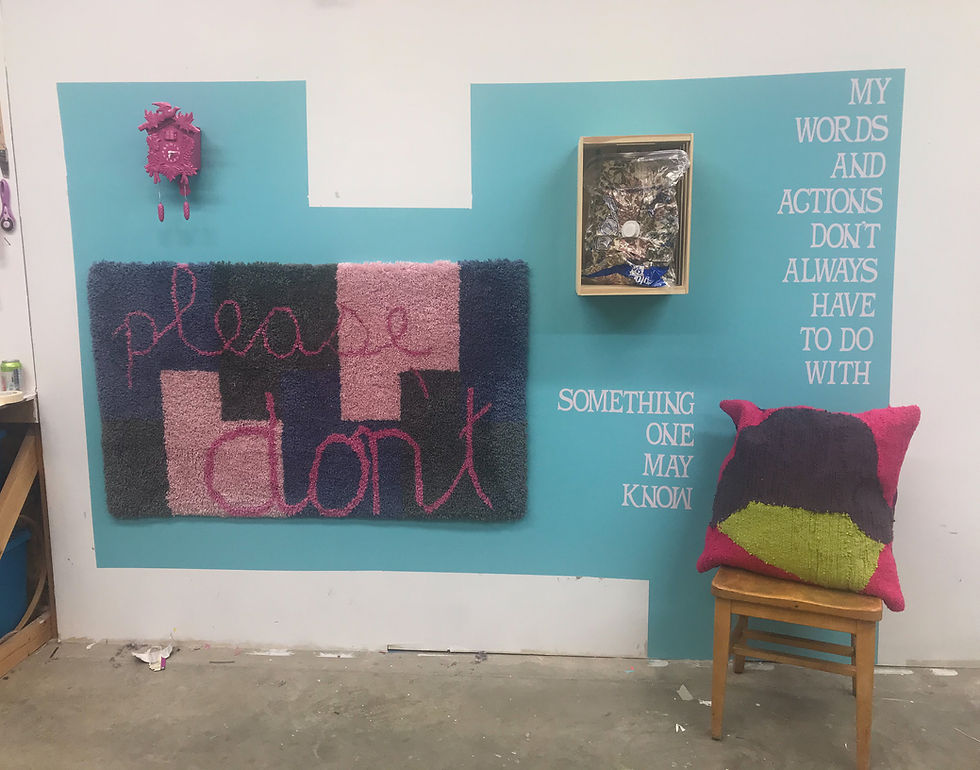
Jodi Robertson
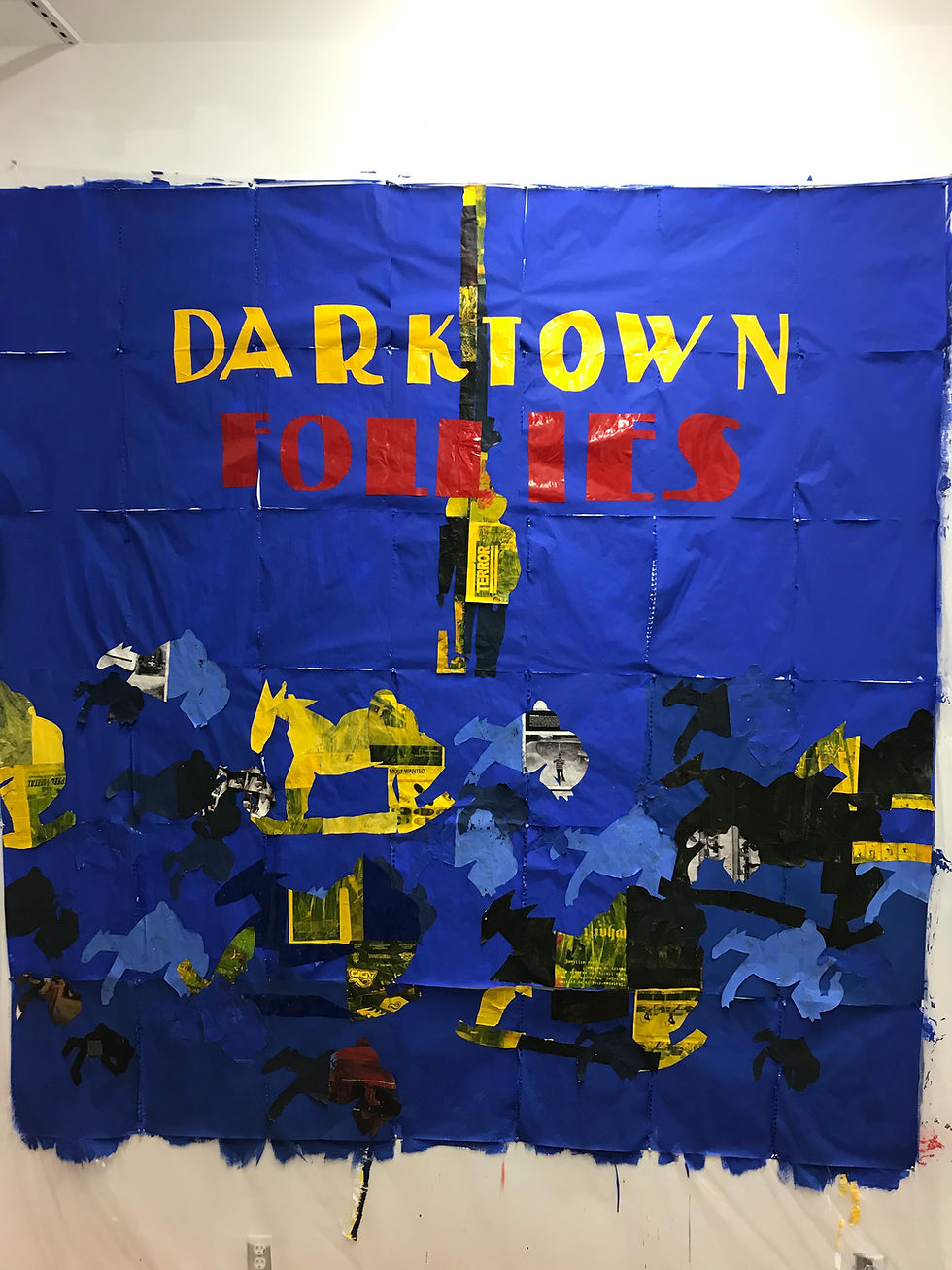
Taj Matumbi
DarkTown Follies
DarkTown Follies inspired from the collaboration with Quanda Johnson. This piece deals with historically violence racism in America that is often ignored or denied. And exploring the moral fallacies of the Western narrative through the lens of folly to further understand the past.
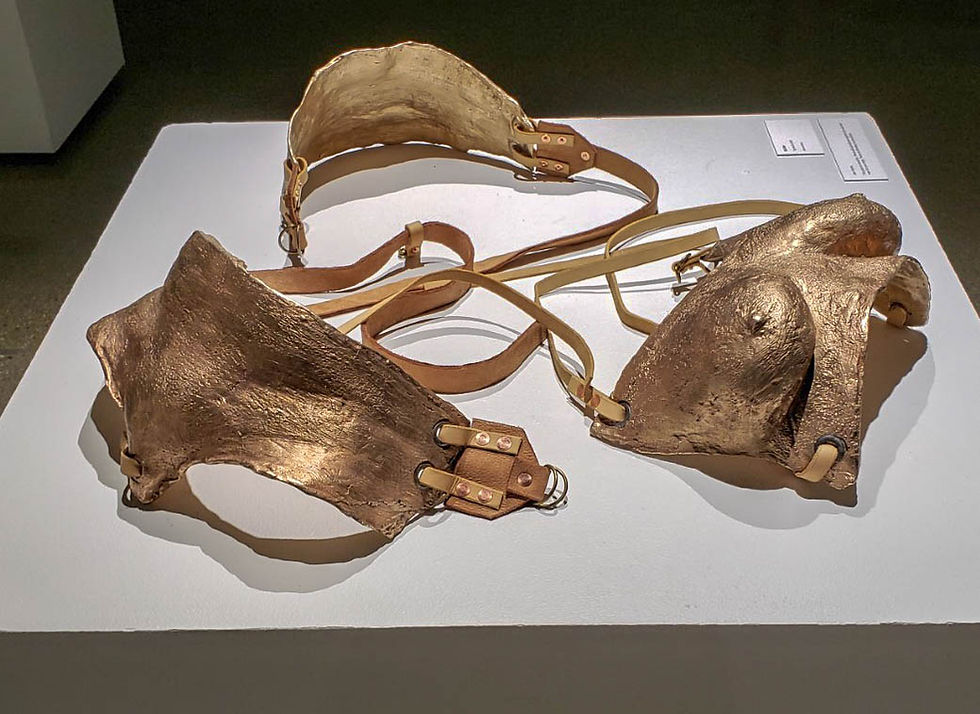
Kel Mur
Try Me On
The bronze castings for Try Me On are based off of molds taken from the artist’s body, segmented into bust, waist, and hips. The most curious problem in this interactive, relational sculpture is how to distribute the weight of the objects, since they are cast bronze. There is a decent amount of attention paid to the safety and the comfort of the participant, and this work to be comfortable to wear- for a time. The longer the wearing participates in the work, the more and more uncomfortable and increasingly cumbersome it becomes. Try Me On is charged with the thought that female presenting bodies are communal property. Women are expected to change roles as easily as they change clothes, bending to the temperament of the situation. Additionally, these castings are not sealed so its patina will change the more it is touched and left exposed. It is armor-like and will not actually be harmed in being handled, but it is certainly not unscathed. Regardless, the viewer is encouraged to play.
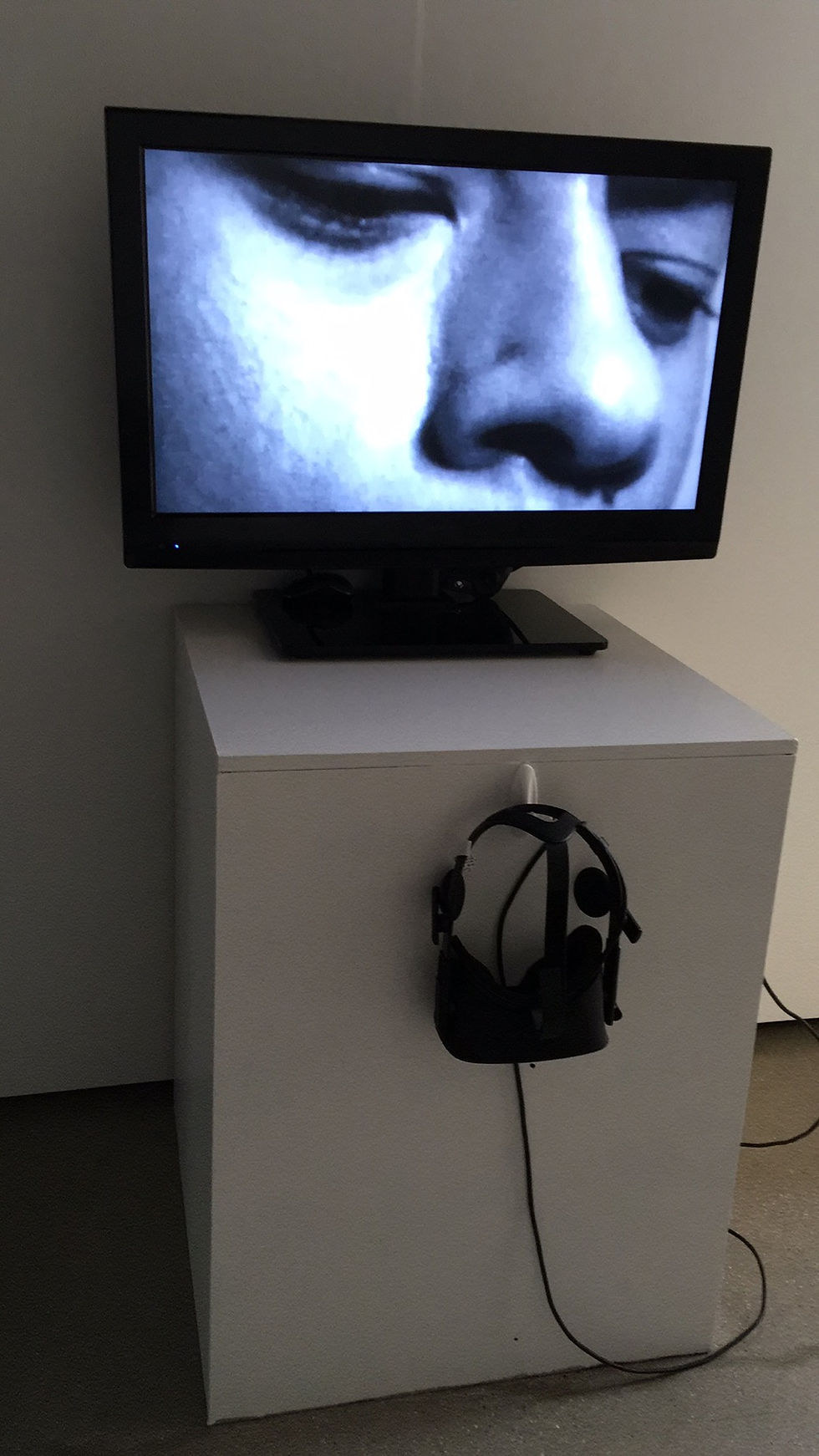
Reggie Liu
Etude 3
Cole and Bach is a collaborative work between video artist Reggie Liu and cellist Cole Randolph who play Bach's work - Cello Suite No.2 iv -Sarabande in the video.
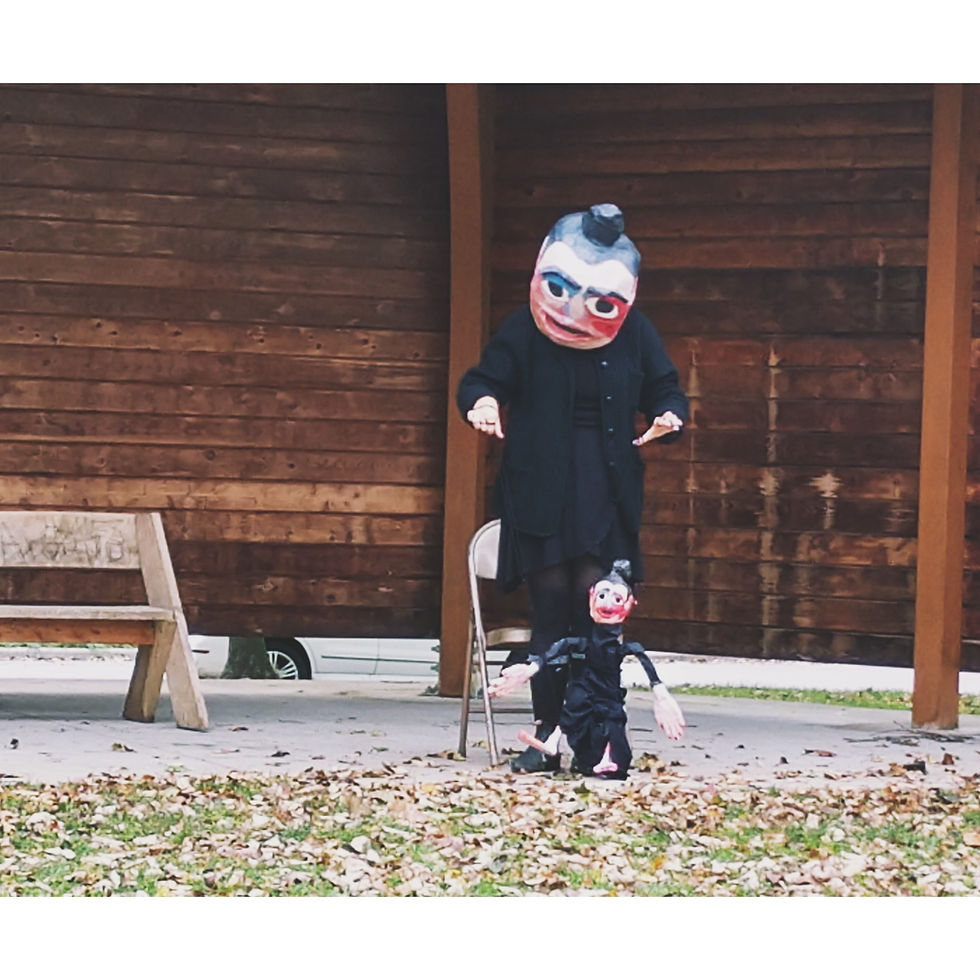
Ashley Lusietto
Fermina the Puppeteer and Fermina the Puppet perform at City Park during Fermentation Fest ‘19.

Anwar Floyd-Pruitt
Hip Hop Puppet Party
Hip Hop Puppet Party is an installation of 5 double-sided, freestanding puppet heads in front of a wall of 100 colorful faces. The puppet faces, which stand 6 to 8 feet tall, are mixed-media collage on paper and nearly 5 times larger than a human face. The puppet mechanisms are made of sheets of pink insulation foam, steel pipes, and rubber bands. The bases are painted wood. The colorful faces in the background are drawn with silicone caulk on sheets of cardboard, all covered with paint.
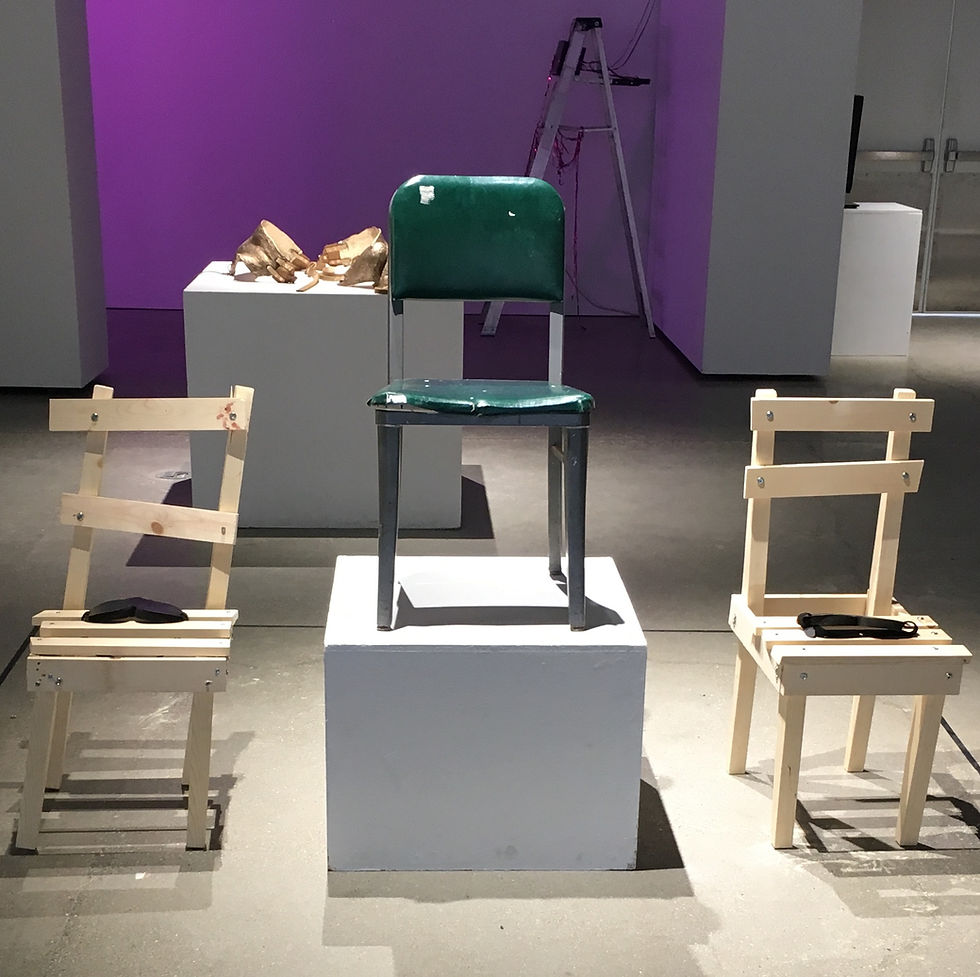
Elizabeth Sheeler
Blind Reproduction
Blind Reproduction enacted a vision to show the differences that exist between people despite effort to be on the same level. With both participants blindfolded we set out to copy the same chair, with the same tool, and identical piles of wood. The result was two chairs of differing personalities, yet both falling short of the original industrial soundness.
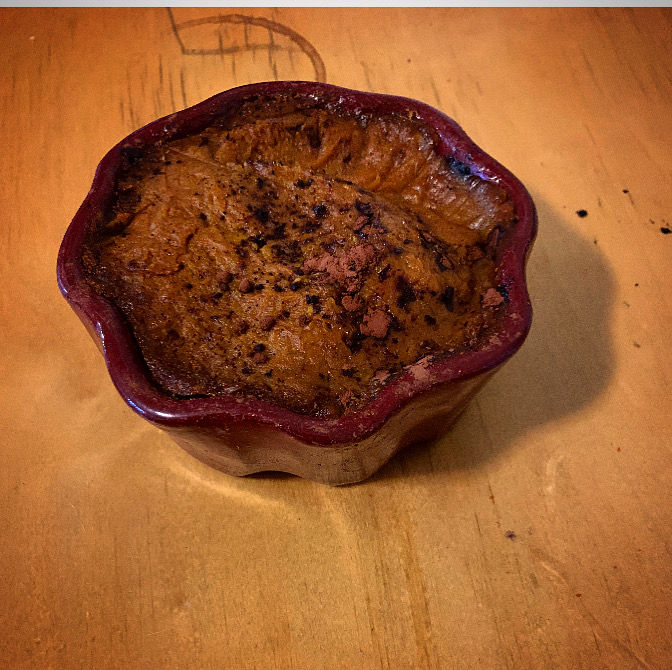
Hannah Schelb
During the Semester, I made 16 ramekins. Each one took about one pound of red stoneware clay to make and feature a undulating rim. The 16 of the 20 that made it through the first firing, where glazed with a cone 5 (mid-fire range) commercial glaze called Firebrick Red. Once firing was complete, I baked 16 mini (vegan) pumpkin pies to serve for the "Recipe Box" potluck performance. The design of the ramekins are a start to a future series of dish ware I will be presenting for my reception and later a dinner performance.
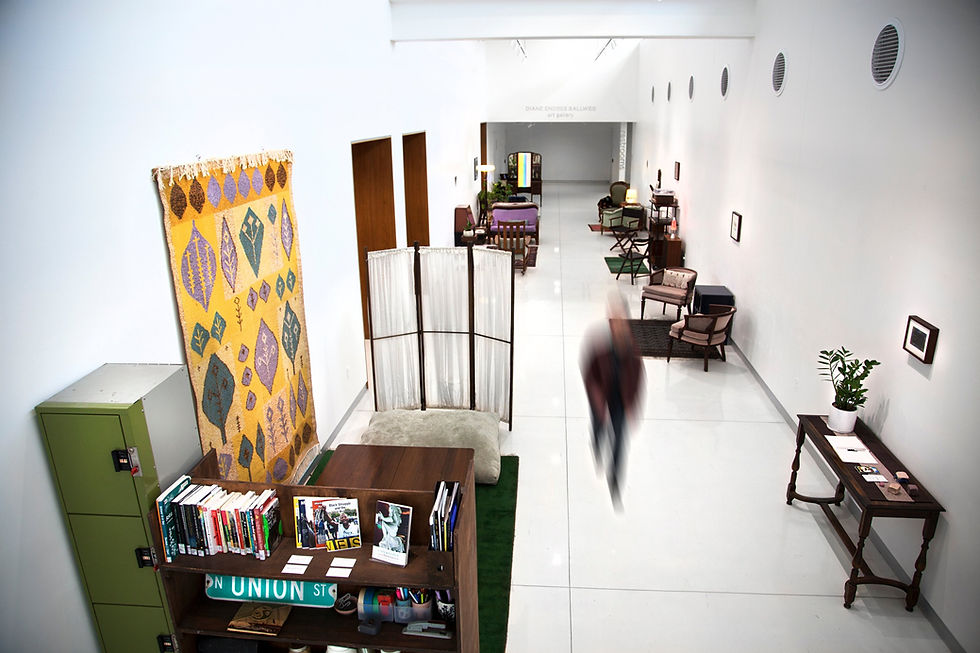
Simone and Max
Græn R∞m
This semester we continued collaborating with our newly founded collective Solarpunk Surf Club*. This work led towards the group's first public-facing project which we are also submitting as our MFA thesis. Below is a description of our project along with a representative image. Græn R∞m is a public living room for utopian (re)creation. Guests are invited to read, rest, play, and socialize in a cozy, communal environment. The project takes its name from three different concepts of ‘the green room.’ In theater, music, and entertainment: a space to relax and socialize backstage; a room for artists and guests to prepare before, and retire after, a performance. In the White House: an artfully decorated state parlor used for intimate receptions and tea ceremonies. In surfing parlance: the sublime yet precarious space inside the barrel of a breaking wave. *Solarpunk Surf Club is an arts collective who create and curate egalitarian platforms for surfing the waves of still-possible worlds.

Kel Mur
Feast of the Feminine
Feast of the Feminine started in 2018 and is an ongoing project that uses food to create a dialogue about menstruation. As the artist, I collaborate with a chef to create a seasonal, locally sourced menu representing the main nutritional components of menstrual blood: protein, iron, calcium, phosphate, chloride, sodium and nitrogen. Every element in the dishes of the five courses contains a nutrient found in menstrual blood – without having any animal ‘blood’ on the plate. For example, an entree like roasted striped bass, fennel, tomatoes, and oil-cured olives would be a dish high in protein, nitrogen, sodium, chloride, and iron. I encourage the chefs I work with to be creative within the framework, and we host a dinner party for 8-15 guests. This event is a performative art dinner that creates a safe environment to share personal stories about life with menstruation and coming of age in a menstruating body through prompts like storytelling, verse reciting, and other social interactions. This performance celebrates the ceremonies of menstruation by intersecting them with rituals of hospitality. The dinner conversation that takes place in this intimate dining environment humanizes this biological process which is still so heavily stigmatized.
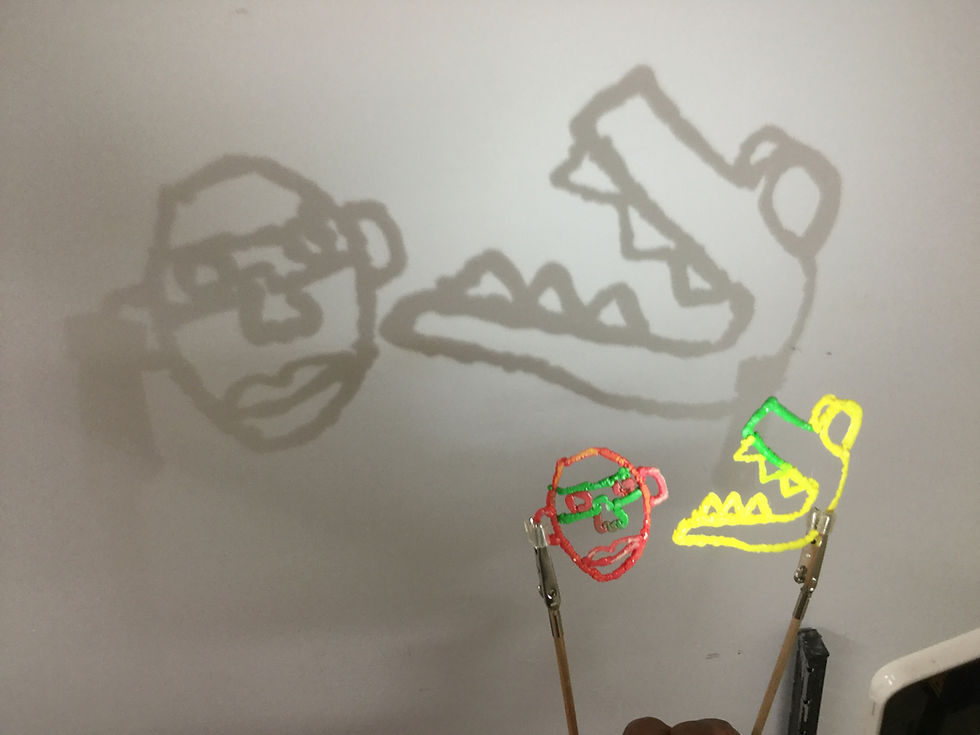
Anwar Floyd-Pruitt
These shadow puppets are part of a collection of nearly 100 ABS plastic filament “drawings”. Created with a hand held extruder, these character sketches will make appearances in future video work.

Grant Gustafson
I look out before me and I see bowls. I look behind me and I see bowls. Bowls are here a way to record time. The movement of my hands and the state of my mind secured in clay. Frustration and hope spun and squished together. 502 bowls. Each table holds the bowls thrown in one day. Notes track the mistakes made and the time spent working. Hand thrown pottery connects us to each other and to our past; let us not discard it in our collective plunder of all that brings life meaning, beauty, and joy.

Andrew Salyer
White Men Falling
Curated by Andrew Salyer May 3-12, 2018 — Curatorial Lab, Elvehjem Building Through the lenses of gender studies, whiteness studies, visual studies, and performance studies, this exhibition analyzes latent and manifest ideological meanings within a photographic archive of white male gestures of falling. Identifying a pattern of what I call cultivated failure as a practice and a trope in contemporary art, I suggest that the work of white male contemporary artists Kerry Skarbakka, Patrick Craig Manning, and a live performance by Andrew Salyer, in conversation with Martin Kersels, Yves Klein, Bas Jan Ader, and Bruce Nauman, question the need for a stable masculinity by rendering the artist tentatively falling, failing, or floating. The work develops a visual counter-argument for how a gendered body should function, and performs a cultivated failure that, in varying degrees, interrogates masculinity and throws whiteness into relief. This exhibition is about falling – kind of. It’s about the possibilities of change within a feeling of disorientation. It’s a project about remembering how to listen. It’s a project about failure. A project about privilege. It’s a project about how one represents the self. It’s about making art, specifically, conceptual performance. It’s about whiteness. It’s about masculinity. It’s about photography and performance. And it’s a gesture toward de-centering and re-orientation. The artists in this exhibition exemplify and complicate the representational gesture of falling. From leaping, to suspension, to falling via corporal exhaustion, the commonalities and departures between these artists’ works interrogate, reify, and expand commonly held ideas of how white men have historically chosen, and contemporaneously choose to, represent this deeply guarded (and protected) subject position.
.png)
Helen J Bullard
Cataclysm
(video still), 2018 This still is taken from in-progress work towards my dissertation show, Borrowing Limulus. Borrowing Limulus is a video and audio installation that tells cultural and environmental stories about the horseshoe crab. In this section, Cataclysm describes the accelerated environmental disaster of the Anthropocene.
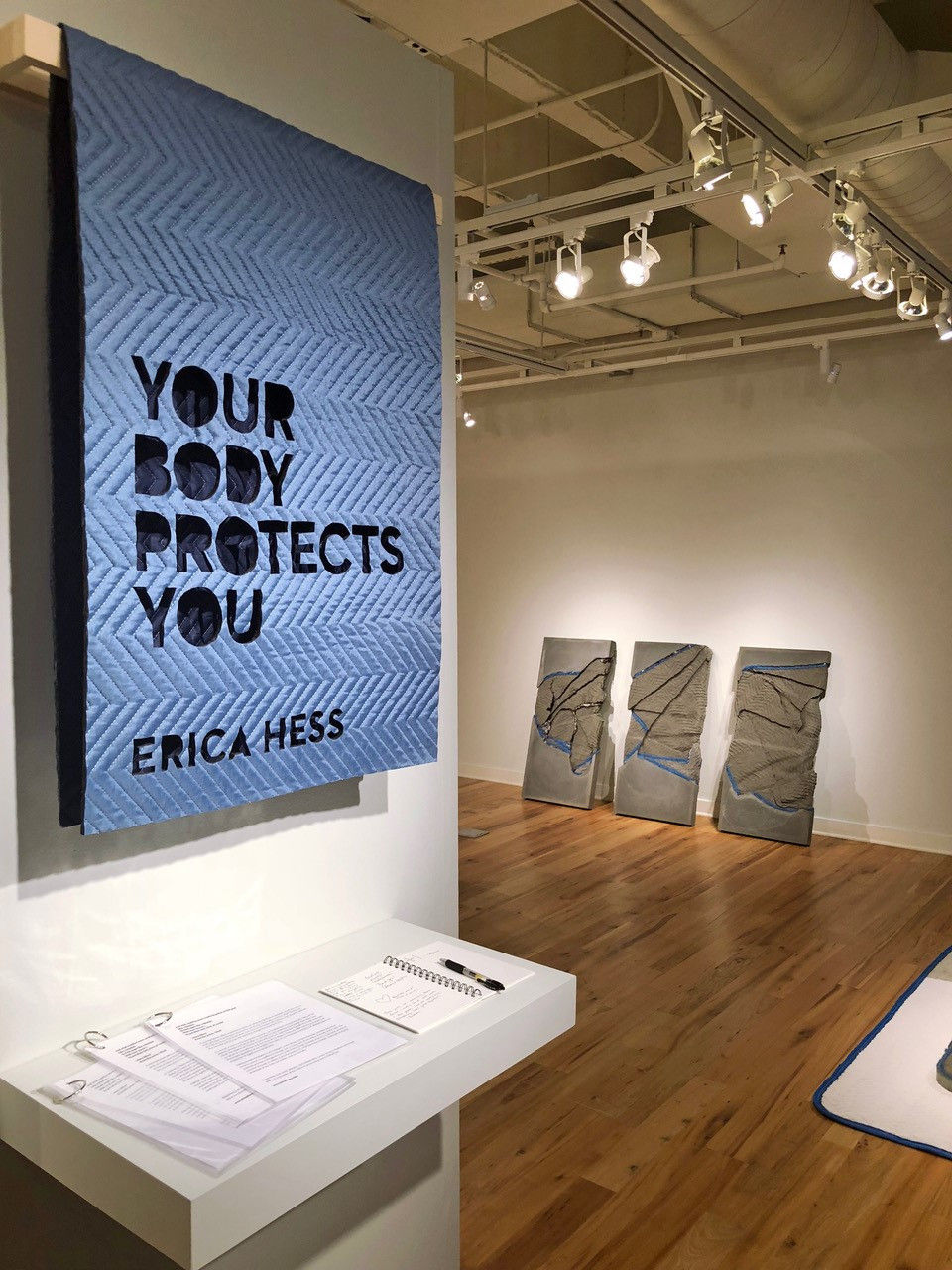
Erica Hess
Your Body Protects You
A moving blanket offers protection to items we value during times of transition, much the way our body provides us protection; temporarily, not always comfortably, and from what? Textiles can provide protection but break down over time as our bodies will. Heavier, more durable materials, like concrete and bronze, will withstand change, the passing of time. In contrast to these more permanent materials, our bodies have a limited shelf life. In Your Body Protects You, the objects we choose to save and store can negotiate and highlight the conflict between our physical vulnerabilities and the future life of objects. They take on our inconstant emotions, our abstract ideas, our projections of significance, but temporarily. The making, the stewardship and, the transportation of these items becomes a personal, emotional transition using an object; a physical attempt to understand the mutable, continually changing landscape of our lives, our bodies, and our mortality.

Andrew Salyer
The Spectacular Trap of Transparency
You, yourself, are under a canopy of iron and glass, a layered and sinewy system of passages with countless intersections – real and imagined structures that bind us in hard metallic nets, but still allow for the frustrating and potentially liberating panes of glass to witness something other than our current state and place. Is this it? Is this the metaphor? Bound as we are, in a haunting specter of line-less dots, we carve into our skin and sky, anything to keep the fear at bay. The order, the flag, the match, the (high)ways, and the uncovering, all games of strategy to fend off the reality of the spinning rock and a hard place in relational flux.
.jpg)
Anwar Floyd-Pruitt
Would You Shoot Me?
Would You Shoot Me? is a collection of 70 instant photographs, documenting a two-week period, where Floyd-Pruitt asks strangers "Would You Shoot Me?", while handing them a camera. Simultaneously, charged and innocuous, the work combines performance, street photography, and self-portraiture.
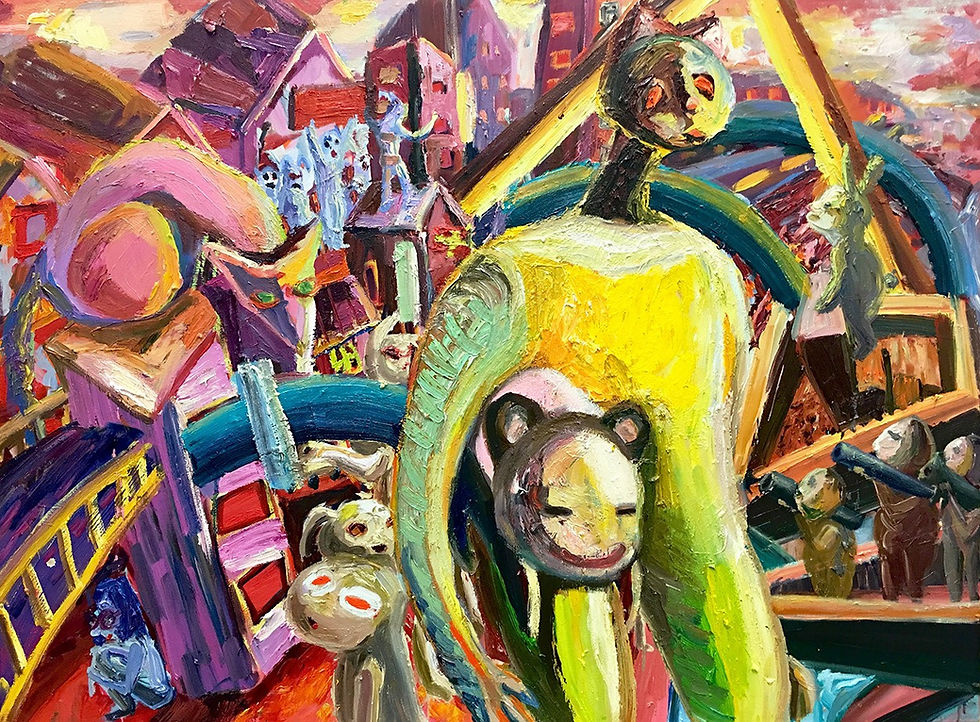
Tzu Lun Hwang
Untitled (still thinking how to come up with a funny one). 36x48’’. Acrylic and oil on canvas. 2018.
My current works are the various ideas of an imaginary survival guide in the social situations that caused my anxiety. Although slightly based on my real-life experience, the fictional characters and worlds that I created in my paintings are my dark, humorous response to the real world that yes, I am a weak and whining adult baby, but I am still here, and I will survive. Hopefully, I will find a way other than hiding and escaping in my works in the third year of grad school.

Simone and Max
Simone and Max. Tree Facebook (installation view). 2018.
Fascinating new frontiers in plant neurobiology have revealed trees to be extremely social beings. They communicate through vast mycelial networks to thwart damage or impending drought and share nutrients with one another, even to the point of sustaining felled tree stumps for centuries. Tree Facebook is a parody promotional video and mixed media installation that juxtaposes this deep-time, embodied network of the forest with the phantasmagoric, hypercapitalist logic of social media. Video displayed on an iPad mounted to a found tree branch, embedded in soil with a vine wrapped around its power cord, asks viewers to encounter a ubiquitous apparatus of scroll culture situated within a sculptural form that could simultaneously read as a trailhead or grave marker—suggesting both an end and a possible way forward. Faced with ecocide and climate breakdown, humans must move away from the illusory duality between ‘ourselves’ and the natural world, towards an ethic of belonging. The dissolution of individuality into relationship is how the arboreal community survives, and a model from which our coming community can learn.
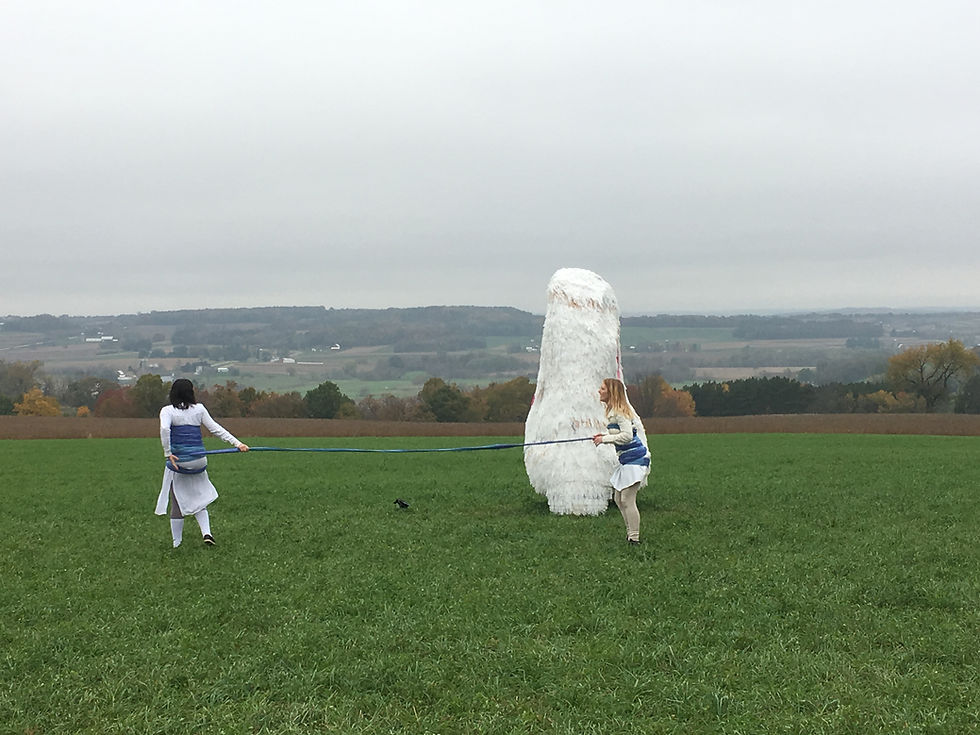
Emily Popp
It's Me!
This performance piece was created in response to the onset of Wisconsin winter, the desire to connect with women and to the earth. It's Me! consisted of two women, Emily Popp and Kel Mur, wrapping and unwrapping themselves in and out of a length of hand dyed, hand sewn fabric. Notions of connection between women, both tightly bound and loose, expressed by dizziness and the need to hold on to one another for stability, were also at play. It's Me! was performed as a part of Fermentation Fest on farmland in Rural Wisconsin.

Helen Bullard
Borrowing Limulus (video performance still), Helen J. Bullard, 2018.
This video performance still represents a fragment of Borrowing Limulus, a story about horseshoe crabs. In this part of the story, I meet the 150 million year old horseshoe crab Mesolimulus walchi, and Mesolimulus' companion, Archaeopteryx, in a museum archive.
.jpg)
Ashley Lusietto
The idea of one talking to oneself prompted me to envision a space where multiple personalities of the same self become visible at once. Actions to and with the self are more than mere utterances and range from loving to neglectful and abusive.
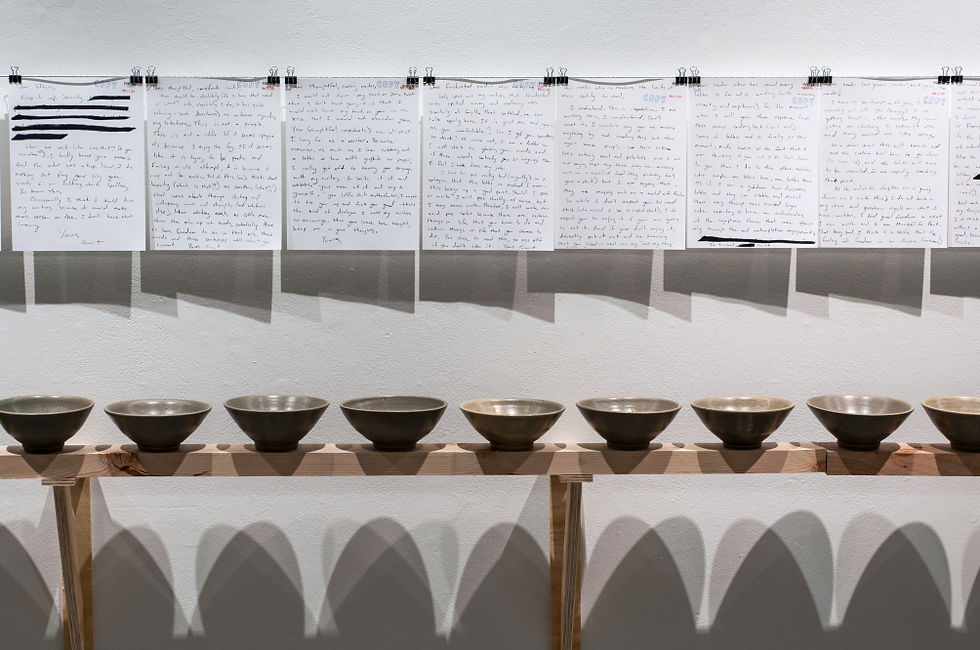
Grant Gustafson
Everything for Nothing (for you)
Installation 2017 Everything for Nothing (for you) was an installation of letters and bowls. The letters were each addressed to the reader and sought to create an intimate (if tenuous) relationship with them. During the closing reception, the bowls and letters were free for the taking given that viewers followed certain rules designed to create tensioned social mingling.
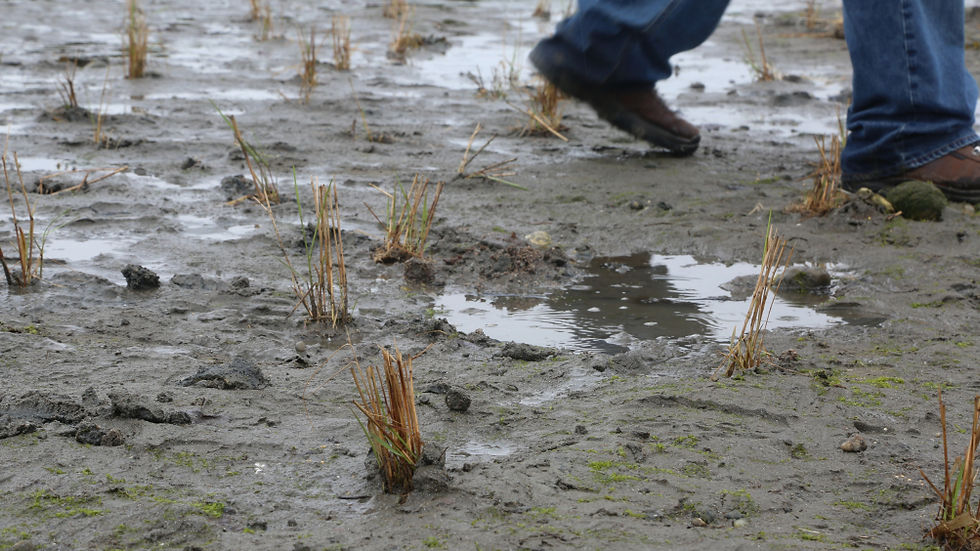
Helen Bullard
15,000 Spartina
Living Shoreline Project, Connecticut, April 2017 Instigated by Jennifer Mattei (Sacred Heart University), a project to plant 15,000 Spartina alterniflora cordgrasses at Stratford Point, Connecticut. Part of a Living Shorelines project to create a rhizome mesh to stabilize sediments, which are essential for horseshoe crab spawning.
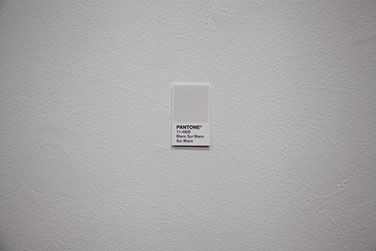
Andrew Salyer
Pantone 11-4800 (Blanc Sur Blanc Sur Blanc)
The image is of a faux Pantone chip called Pantone 11-4800 (Blanc Sur Blanc Sur Blanc). The first part of the title refers to the proprietary numerical classificatory system of color the Pantone corporation owns – the original name for 11-4800 is Blanc de Blanc (translation: White from White) and it is considered the whitest white Pantone has classified. The variation and change of name I made from Blanc de Blanc to Blanc Sur Blanc Sur Blanc is a conceptual move to reconsider the potentially fixed gesture that white from white might state – and introduce an idea that the white colors are layered on top of one another and are, therefore, an adjustable stack of concepts not fixedly “from” one another. There are a minimum of three white colors to the work, visually speaking: the white Pantone color, the substrate (white paper) it’s printed on, and the painted gallery wall behind the work. The parenthetical part of the title also is a French-English phonetic play on words – in French it means White On White On White, but when pronounced in American English it becomes “blank, sir, blank, sir, blank,” absurdly insisting, as many do both artistically and socio-politically, that the color white is blank or a default base from which to begin constructing our works and worlds from. Are there slippages and implications thereof in the language and aesthetics we chose? Are they linked to the systems, literally, and figuratively, keeping these things structurally in place. It’s also an analyzes on the social construction of whiteness and the impact it has on culture when deployed as an ideological strategy tethered to power and social status.

Chelsea Thompto
Untitled
Still image from procedural text arrangement program

Erica Hess
The Dance Floor
This piece is an installation of one moving/packing blanket and 36 concrete casts of sections of moving blankets. The work explores ideas around the life of objects and their storage, value, and preciousness. The use of the blanket suggests protection of an object, and in this protection is implied vulnerability. The work also investigates power and vulnerability through the use of soft and heavy/hard materials.
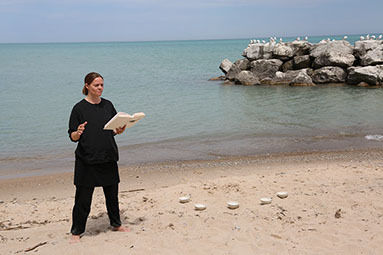
Helen Bullard
What If… (part of the Restless: series)
Performance Document Chipstone Foundation (Object Lab, 9.0), Klode Park, Milwaukee
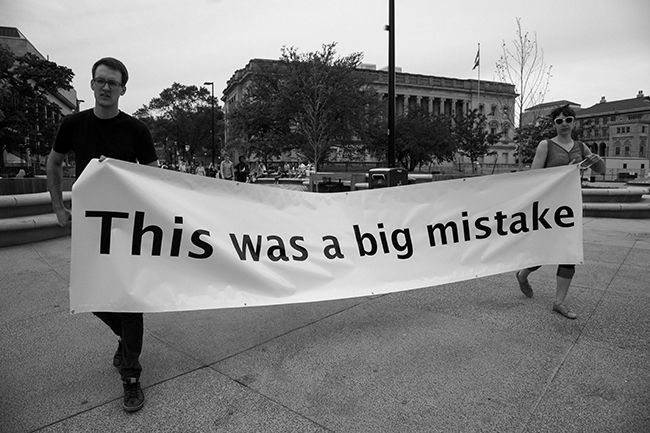
Grant Gustafson
This was a big mistake
Bascom Hall to the State Capital Friday, May 20, 2016, Madison, Wisconsin Performance with Samantha Lasko Photography by Stephanie Lifshutz The following was printed on cards and handed out: What was a big mistake? What is a big mistake? Have we made a big mistake? Are we making a big mistake? When was the last big mistake? When is the next big mistake? Is there an end to big mistakes? Was there a beginning to big mistakes? Can we hope to not make big mistakes? Do we hope to not make big mistakes?

Erica Hess
You Can’t Take it With You
Commonwealth Gallery October 1-8, 2016 'You Can’t Take it With You' explores the friction between our understanding of our bodies and their ultimate disintegration. The exhibition’s title, inspired by the famous 1938 play of the same name, is a nod to the eventual necessity that we must leave all worldly ‘wealth’ behind when we die, including our physical bodies. What is our experience of the corporeal and transcendental, growth and decay, belonging and displacement, life and death? These works reveal our temporary nature juxtaposed against the life of material objects. Developed partly as a response to the practicalities of being an artist, 'You Can’t Take it With You' also subtly addresses how artists make sense of their own work’s physical presence and life cycle. Does knowledge of our own mortality affect how and what we create?

Elizabeth Thorp
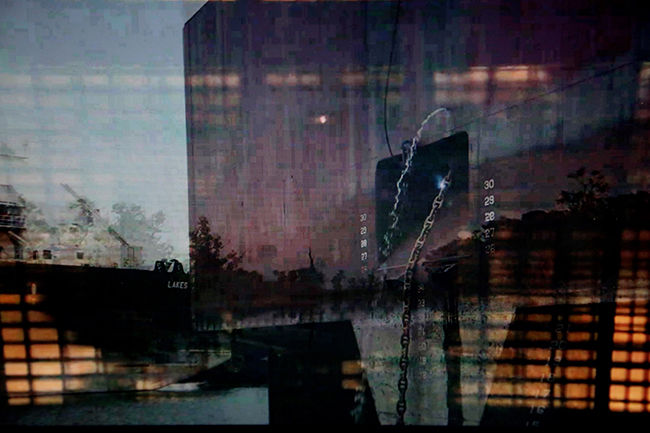
Helen Bullard
'The Shift' is a 14 minute environmental sound and video montage that tells the story of a day in the life of the Anthropocene. Originally made as a performance document to accompany the live performance of They’re Arguing Again (Helen J. Bullard/Hannah Rose Bunten), at Stories of the Anthropocene Festival (sabotage & survive, a guerrilla narrative project) Stockholm, 2016, KTH Environmental Humanities Laboratory.
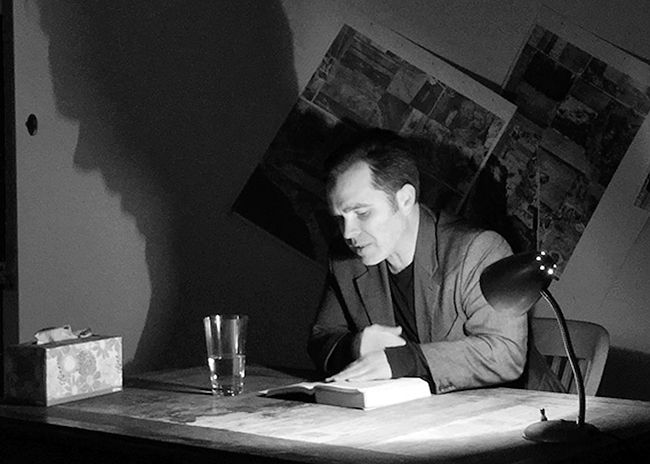
Andrew Salyer
Reads Hannah Arendt
On a cold December day, in the year 2016, from inside a large corner office with two gigantic windows overlooking downtown, Andrew Salyer read from Hannah Arendt’s 'The Origins of Totalitarianism' for seven hours. The reading took place on World Human Rights Day, commemorating the day in 1948 that the United Nations General Assembly adopted the Universal Declaration of Human Rights. The performance was part of MUNICIPAL, a one-day pop-up art event in the Madison Municipal Building on the eve of its renovation.
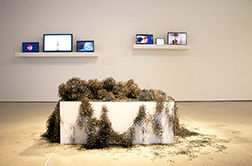
Amy Cannestra
that sweet, that nasty, that gushy stuff
that sweet, that nasty, that gushy stuff was a multi-media installation that contained 18 looping videos and the sculpture 105 of 120lb. Each short video was created using body and bobby pins to objectify the body and humanize object.

Maggie A. Snyder
Unburdening
50 oz rainbow sprinkles, tweezers, people, table, stools, print Experiential, durational performance that occurred over 5 days. Approximately 10 oz of sprinkles were sorted into monocolored piles.
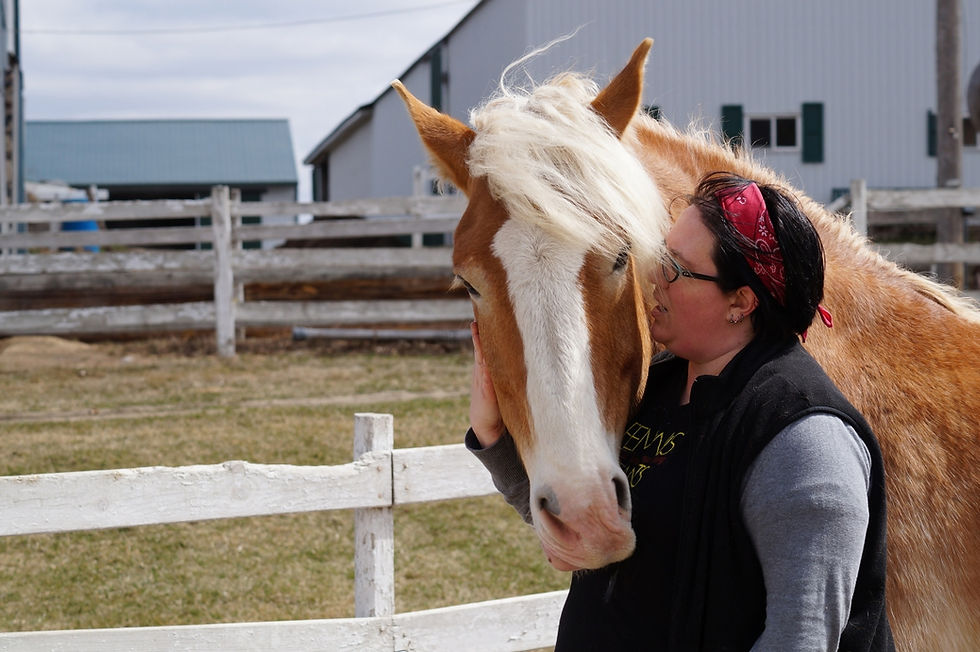
Tina Cady
Bad Cowboy
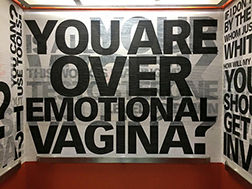
Spooky Boobs Collective
Loud & Clear
Loud & Clear at HI/LO is the inaugural exhibition for SPOOKY BOOBS COLLECTIVE. Late on Sunday April 5th, the collective will cover the interior of the elevator with microagressions that have actually been said to artists on the University of Wisconsin-Madison campus. Over a four week period, the collective will pick random nights to add layers and layers of more migroaggressions.
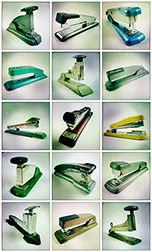
Angela Richardson
PAPER-PUSHER, combines the tale of a lonely, blue-collar worker’s elaborate fantasy life with an exhibit of reconfigured office ephemera. The work reflects poetically on early 20th century work life and the technological changes since that have rendered many of that era’s objects, practices, and roles obsolete. This project asks a number of questions, among them: What’s behind the impulse to accumulate? What drives our compulsion to collect and categorize? We save objects, make notes, and take photographs in order to remember and preserve. So then, is it through neglect and abandonment that we choose to forget? As a culture we tend to celebrate “collectors,” question “keepers,” and pathologize “hoarders.” I’m curious about the lines drawn between connoisseur and packrat, visionary and madman. And I wonder: where on the continuum does each of us sit? What makes the dance of holding on and letting go so charged? Via PAPER-PUSHER, I continue my on-going inquiry into the many ways in which we use material culture to form identities, understand history, and connect with one another.

Salyer + Schaag
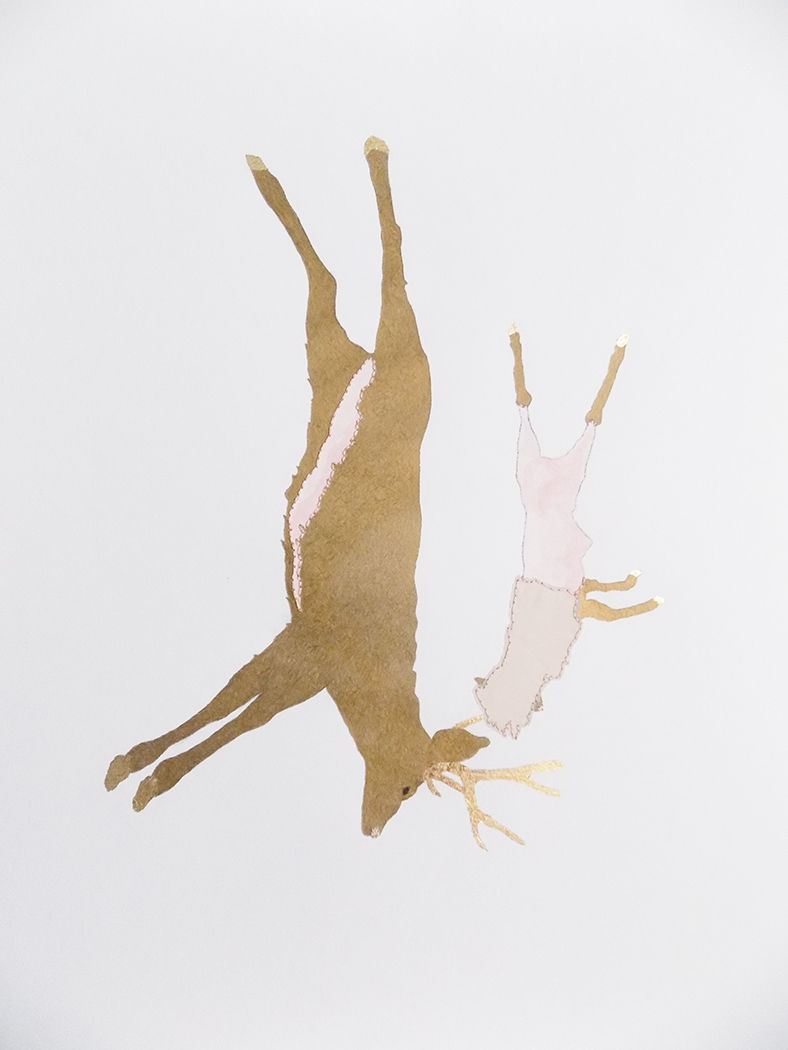
Amanda Lovell

jojin van winkle
further on
Video, monitors, wood platform, plastic and metal chairs, wood doors, metal sawhorses, umbrella video duration: 00:05:30 minutes further on is a multi-channel video installation. It’s narrative is set in an imagined future. The installation is composed of three narrative-based videos, which play simultaneously on nine monitors. This post-apocalyptic story begins after ongoing warfare and pollution has the depleted the world’s natural resources. The Earth has become uninhabitable and the remaining people retreat into secured areas called Sanctuaries which function as a humanmade natural microcosms. further on is a psychological journey about individualization while navigating the powers that be from outside (the Administration) and inside (the psyche). Serena, the main character, struggles for individuality while she serves as the sonic translator for the Living Archives, which houses precious plant specimens.
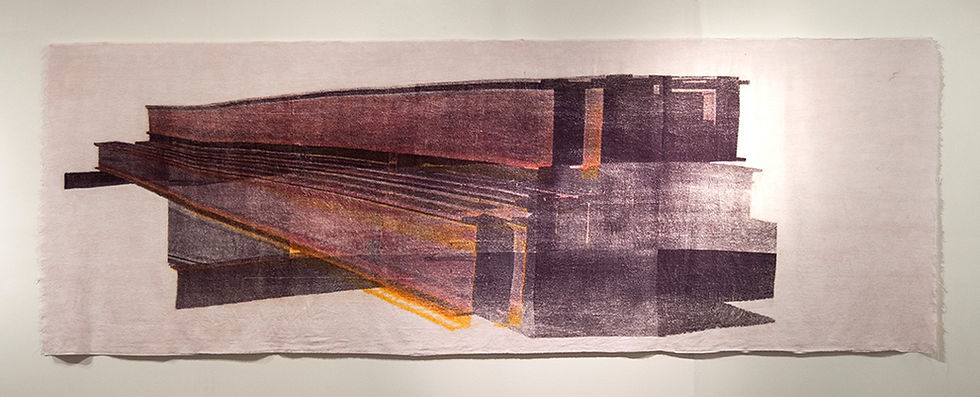
J. Myszka Lewis
Settle
screen print with fiber reactive dye on Terry cloth / 60″ x 174″ / As they are, images dilute the characteristics of the subjects they represent. Objects impose their materiality upon others. In my most recent body of work, images of I-beams and the materiality of terry cloth are united – the beams endow a sense of presence and legitimacy to the fabric, and the terry cloth robs the I-beam of its assumed strength and stability. The terry cloth’s texture serves the photographic quality of the image, however it also splits the beam’s likeness into thousands of soft looped dyed threads, undermining its representation of power. Hard becomes soft, and soft emboldened.
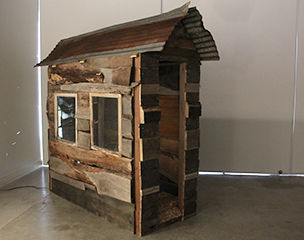
Tina Cady
Residual Home
This work was the manifestation of my own haunting. The image on the inside of the shack is a black and white video of myself feeling the walls and rocking. This work was part of my MA show, it doesn’t have to be this way but mostly it is. This show was about the process of finding oneself though and after a personal trauma.

Natasha Hovey
6P° 21′ DQ2″
Casted ceramic, cement, foam paper, cable, hardware, wood. Photo Credit: Jim Escalante
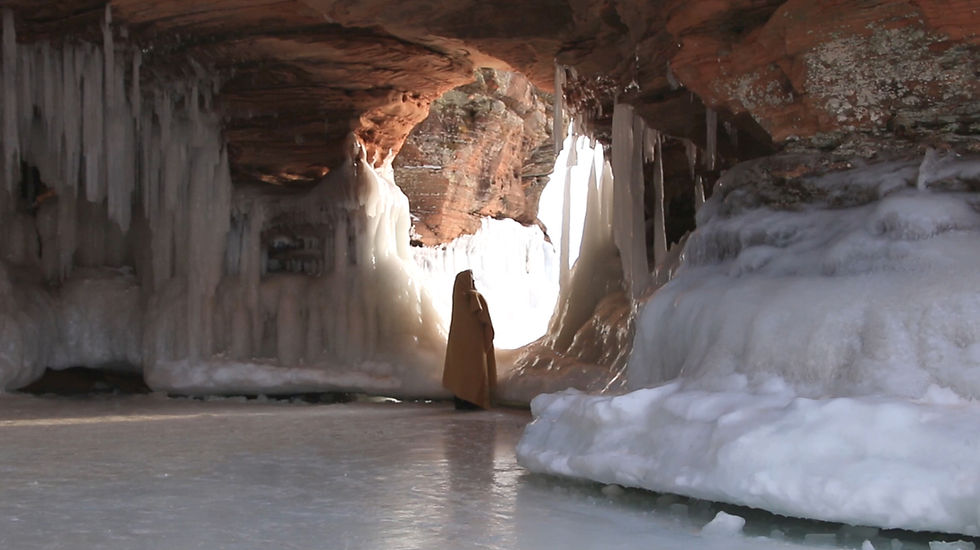
Jojin Van Winkle
futher on / part 2: The Wayfarer
screen shot of Serena in the Ice Caves. duration (@ 10 minutes). further on, features an imagined future. further on’s theme is the resilience of the main character and her connection to the Earth. The narrative asserts that the depletion of natural resources has imbalanced the Earth’s environment coupled with pollution from the residuals of on-going warfare. The Earth’s has become uninhabitable and the remaining people retreat into Sanctuaries. The project will include five color films imbedded in an installation. The Translator is the first film. Each of the films features one main character Serena. Serena is the sonic translator for the Living Archive at the Sanctuary, which contains plant specimens. When she senses vibrations from the plants she sees images, allowing her to understand the plants. In The Translator, plant shipments are being sent anonymously to Serena from outside her Sanctuary’s parameter. These particular plants start sending her images that the Earth is no longer polluted and has rejuvenated itself. They want her to go outside the Sanctuary. The Administration does not want Serena to investigate these findings, instead they want the new plants immediately incinerated. Serena must decide to listen to the plants or the Administration. In The Wayfarer, Serena attempts to convince the Sanctuary’s Administration that the Earth has been triumphantly resilient. Their conversation quickly becomes a personal attack on Serena. Serena suspects there are hidden motives at play. She must escape the Sanctuary and take refuge elsewhere.
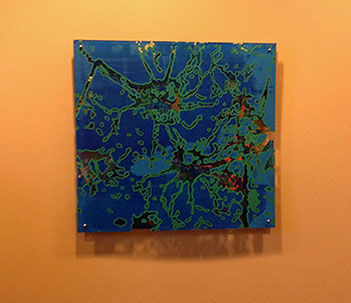
Angela Johnson
What you cannot see happening inside
28″ x 30″ x 4″ Screen printed Plexi glass, mirror, and hanging hardware This image was created site specific for a class show (Pattern in Environment) at Life Technologies-Thermo Fisher Scientific, a stem cell research facility. I wanted to keep with my theme of changes in the brain and Life Technologies does stem cell research with Parkinson’s disease cells. I started with an image of a Parkinson’s disease brain cell and reworked the image in Photoshop. I created a second layer outline so that I could create a two-color print. I printed on plexi and offset the image with spacers. A mirror was place behind the 2 printed plexi panels so the viewer catches glimpses of himself or herself as they view the work. Much like Alzheimer’s and Dementia there is no way to know if you may get the disease, no way to prevent and no cure. Approximately 60,000 people a year in the USA are diagnosed with Parkinson’s. I wanted the viewer to ponder the idea of the unknown of the future.
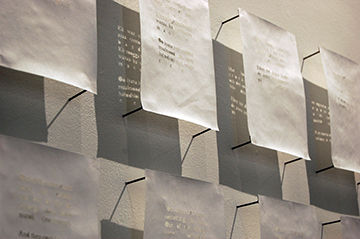
J. Myszka Lewis
100 Attempts (Expounding Absence)
cut Tyvek, nails, and light Approximately 4′ x 18′ overall This piece is an installation of 100 pieces of paper, each with a different translation of a block of text cut out of it (approximately 35 languages are included overall). The text is excerpted from Judges 14:14 and one of the English translations reads, “Out of the eater came something to eat, out of the strong came something sweet. And after three days they still could not explain the riddle.” This piece investigates not only the typical understanding of translation as it relates to languages, but also explores the process of translation as moving something from one form to a different physical form, material, or location and the results of that type of translation. This piece also deals with themes relating to consumption, vacancy or absence of meaning, and the use of text as a tool to create visual pattern or decoration.
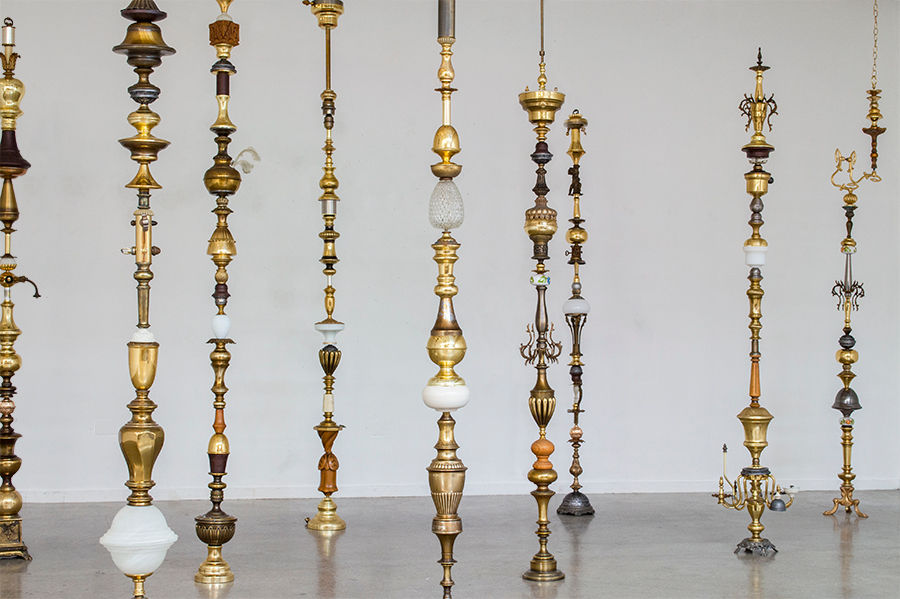
Liz Heller
The British Butler and the Prostitute
Collected Lamp and Chandelier Parts Personification synesthesia is when an individual subconsciously imbues a personality to inanimate objects, a phenomena I have experienced all my life. The style, finish, vintage condition and weight of the chandelier arms and body parts all contribute to their classification as a literary or cinematic archetype. Personalities range from the red neck cousin to the state senator and from the British butler to the prostitute. The physical act of ‘screwing’ these pieces together becomes quite sexual with technical terms like male/female parts, nuts and nipples, which is humorous, naughty and ethically challenging. All lamp parts have a universal connection system, a standard threading for mechanical connections. These pieces that aesthetically should not be connected were designed to be interchangeable and fit together.

Katie Aspey
Rise over Run
Katie Elizabeth Apsey performs in Rise over Run, a site-specific dance work choreographed by Li Chiao-Ping. While completing a reading independent study with Laurie Beth Clark on the subject of performance studies in preparation for her PhD preliminary comprehensive exams in art history, Apsey was able to apply her theoretical explorations to her practice as a dancer. Choreographed on-site at the Wisconsin Institutes for Discovery, Rise over Run uses movement to examine how architectural space and framing of various places influences the performances of identity, the directions of academic/scientific research, and the behavior embodied in these spaces/places. Dancing for the Li Chiao-Ping Dance Company gave Apsey a practical way to think through her dissertation research on the performance of minoritarian identity within museum spaces.
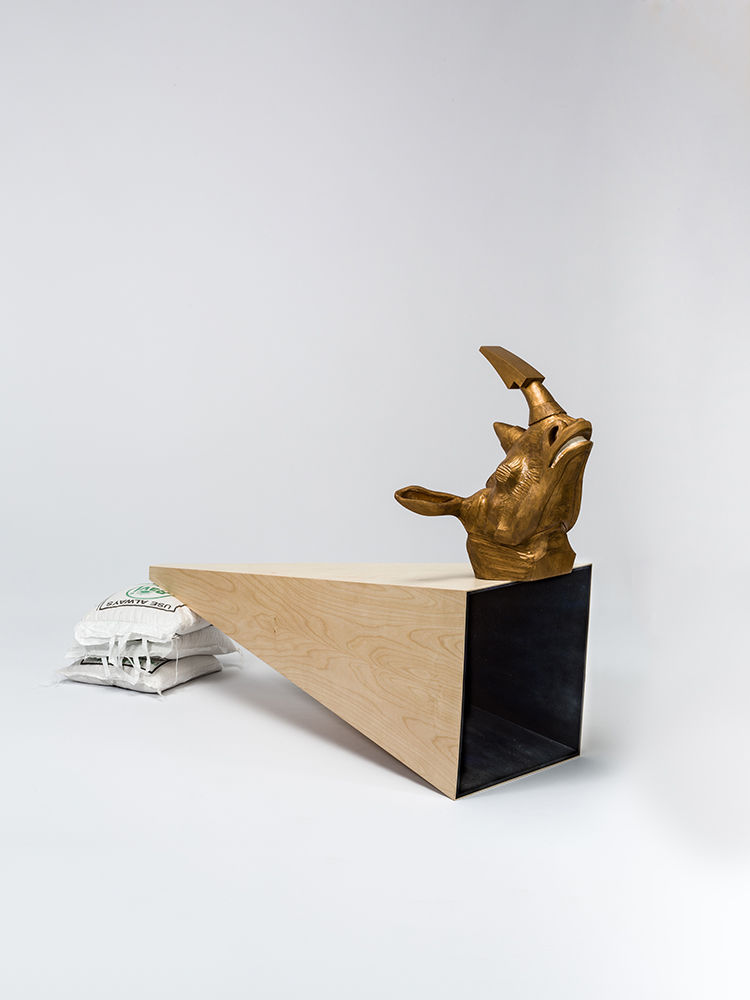
Silvia Rosenthal
Ganda 1514
Bass Wood, Plywood, paint, rice 72″ x 21″ x 43″ This work is one possible rendering of Ganda, the living rhinoceros that was the Lisbon Rhinoceros of Durer’s famous print. Posed in his last breath on the sinking ship and yet not fully rendered. He is gold like an idol with a horn resembling a tool. He is a beast of burden, the burden of description or the anchor of the ship. The work gestures to a false or undefined idol, Durer never saw this animal with his own eyes and yetmade the print that forever defined it. His body is a hollow shape with apertures on either end that the viewer can look through. It is both a body and a monument that is neither erected nor fallen. The bags of rice that the body sits on are employed as ballast. The banal elements of empirical trade routes fueled by the spice trade and the quest for land, this imported element grounds the piece both literally and metaphorically.
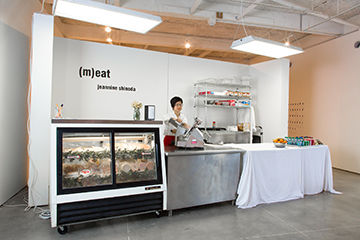
Jeannine Shinoda
(m)eat
(m)eat is an ongoing project that utilizes the production and service of designed bologna as a basis for interaction. This images shows the performance of this project that occurred in the 7th Floor Gallery in Madison, WI on March 29, 2014 with Jeannine Shinoda slicing meat and serving open faced sandwiches to the public.

Adrienne Tracy
Triangular Elements
This series of printed triangles came from my research using transparent color. I was exploring how the build up of colors creates new colors and for this particular series texture was a new added element. Choosing to display these prints all together was a thought during the curatorial process. By displaying these all together I gave myself another chance to explore the composition of the combined prints. It now becomes a larger finished piece of work and becomes one piece of work instead of multiples. Generally in printmaking, the artist tries to make each print the exact same, thus making it a series. Here, no one print is alike, depicting the exploration of color, texture, and composition. The viewer is able to see my thought pattern throughout the printmaking process.

Anais Reyes
More Than it's Worth
Today, it costs the United States Mint 1.83 cents to produce a single penny. That’s even gone down since its peak price in 2011 from 2.41 cents. This means that every year, more than 70 million dollars of federal tax money goes to subsidizing the existence of the penny. Several studies have shown that the time Americans spend fiddling with pennies costs us as much as one billion dollars a year in opportunity costs. The limited utility of pennies leaves most people inadvertently collecting them, and the fact that pennies do not perform their intended purpose of facilitating exchange leaves us to question whether or not they are useful at all. More Than it’s Worth is an exhibition of my own inadvertently collected pennies. Useless, expensive pennies. Gelsy Verna Gallery, Art Lofts, University of Wisconsin-Madison. October 21- October 23, 2014

Anna Arnold
All the Old Shoes
During the summer of 1998 a muddy pair of Converse sneakers were tied together and hung on the backyard clothesline to dry. The low cut “tennies” hung for weeks, months, and then years. When the clothesline was replaced the shoes were tossed onto the lower branch of a nearby crab apple tree. There they continued to hang until the first shoe finally fell to the ground on August 8, 2011. The second shoe fell just seventeen days later. Throughout those thirteen years other shoes belonging to Mark Arnold and some of my own have been retired to the tree, replacing those that had fallen. Mark has documented the comings and goings of the shoe collection with random photos that capture passing time and the seasonal effects the shoes have endured, along with the durability of the shoes. As long as the tree stands there will always be a place for all the old shoes.

Katy Mara
Found Feathers Collection
Gelsey Verna Gallery, Fall 2014

Jay Katelansky
Open on Purpose
Open on Purpose is a virtual exhibition of Women of Color that are a part of the community I have built for myself, whom are all living around the United States with various backgrounds whether it be social, political, or economical. These women are using extensive platforms such as painting, performance, photography, and printmaking as an act of reclamation and self-determination.

Rebecca Gongorra
Curating Life, from walls to a wall
“Working in a creative field is autobiographical, a reflection of ones interests, values, and sensibilities” This was Steven Rand’s thoughts on curating and creative work. Today, everyone curates in their lives. They pin, post, follow, upload, and share details of their lives as well as values and interests. We each view each other’s usually careful curations on social media with a sense of curiosity and voyeurism into the lives of people we may or may not know and share our own with other’s who may or may not know us. The one true autobiography of one’s interests lies in what they chose to curate in their own homes. What images and text do we choose to place in the spaces we live and how do these choices define us? We find and collect art, objects, and take photographs that reflect our own interests and values. This process usually follows an autobiographical narrative of where we are or were at in that specific time in our lives and how our own personalities have changed. This collection comes directly from the walls of the curator’s home and reflects the interests as well as the narrative of her personal life. Each room has a different narrative and once removed from the context of the room and placed in the same space they create a larger narrative of the life that is surrounded by this work. Each piece has some memory, story, decision, or function behind it. As a viewer you get a glimpse into the home and life of another person that is not shared on social media but only to guests who are invited into the owner’s home. The artwork one decides to display can act as signifiers of the faith, wealth, taste, and socio-ethnic standing of the people who reside there. This collection showcases rituals in the home and the display of the social identity of the owner of the collection through material culture.

Leah Haefner
To My Valentine, A Collection of Vintage Valentines
These once-exchanged tokens of affection often contain short poems or witty rhymes. The collection of over 60 printed valentines is from the personal collection of Leah Haefner and contain over 65 vintage valentine’s from the late 19th to the mid 20th century. The various examples of valentine styles in the collection include flats, honeycomb paper puffs, postcards, and three-dimensional foldouts.

Erik Sorenson
My Library
Gelsy Verna Gallery, November 3-7, 2014. Perhaps one of the most ubiquitous and universal collections, the personal library, says a lot about its owner. From a quick scan of the titles and genres included one can glean the tastes and interests of the collector. The library of Erik Sorensen includes a large number of books of photography, art, design, and interior design which mirror his interests. For him the coffee table book, oversized and weighty, has always been the showpiece. This curated display showcases his collection of prized books both large and small.
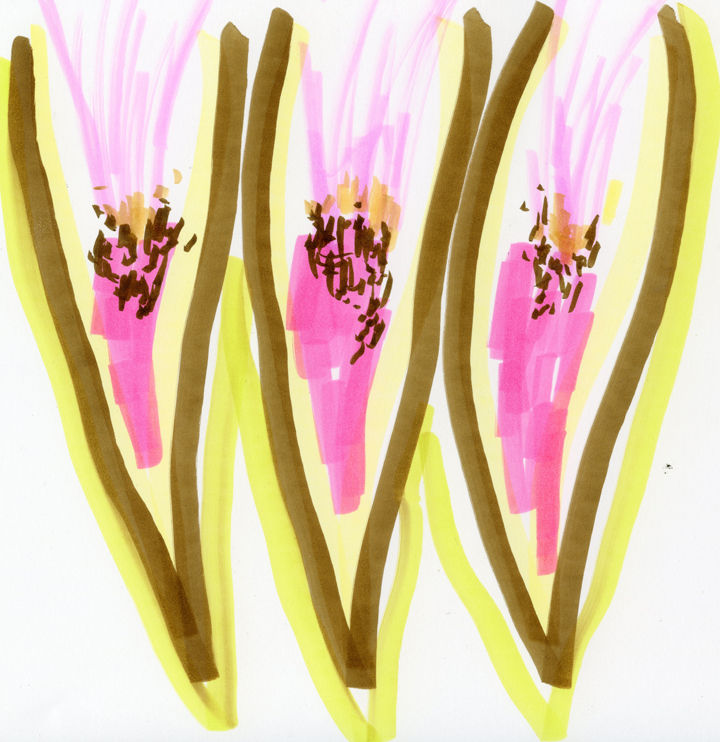
Mauree McQuirk
Slice
Water-based Brush Pens 9″x12″ 2012 Slice is part of an ongoing series of florals, abstractions and geometric patterns.

Silvia Rosenthal
Untitled
Photograph // 2013 // This is an experimental image, in thinking about making visible worlds within worlds. It is about changing in scale and making connections and dislocations within a single image. This is the beginning of a new project that may take a more performative turn, but I am not sure yet how. There may be a voice along with the images. There may be movement or ‘stop motion’ in the images. I am not sure if these images are part of an actual story or are a situation or simply an image.

Emily Belknap
Parking Lot and Field
This is an installation view of two pieces in my MFA exhibition, Backyard Dilemmas. The piece in front is titled Parking Lot it is constructed out of concrete, metal, paint and salt. The wall installation in the back is titled Field. Each miniature cornstalk in Field is made of wire, string, brown paper and glue. There are 1700 cornstalks.

Natasha Hovey
Figure 9. Intrahepatic Schema
Stoneware, Cone 4 Oxidation – This piece consists of 14 triangle forms displayed in a semi-circle 10″x62″x35″ 2012 Figure 9. Intrahepatic Schema was made up of fourteen triangle forms arranged in a circle that extended from the wall. Each triangle contains various ceramic components, hardware, galvanized wire, tubing, drywall tape, aluminum, wax paper, concrete, plaster and wood. Figure 9. Intrahepatic Schema explores how the miniature is translated to the gigantic with the mending of organic and inorganic materials to represent bodily systems within an architectural language. Diagrammatic illustrations, found within present day and historical medical texts and anatomical representations created by Fritz Kahn, informed and inspired me to create an abstracted version of the interior of a liver.

Dominique Haller
Script
The word feminine is written in blue ballpoint pen ink on a sheet of latex and repeated hundreds of times. The writing evokes rhythm and pattern; the relentless repetition of the word amounts to an investigation of its surface and its meaning. The feminine “block” is interrupted by an outburst of sentiment, or rather, the negation of sentiment: The words “I don’t care”, repeated over and over, form a second block of writing in the lower third of the piece. The latex sheet acts both as a fabric and a skin-like surface. The piece is wedged between two wooden slats covered in blue ballpoint pen ink. Gravity pulls at the latex and folds the material in forms that hint ever so subtly at the figurative.

Sylvia Rosenthal
Untitled Wilderness Study
Wood & paint 44″L x 44″W x 90″H 2013 This work is re-worked. It is a piece from my first year, but fit back into my current research. In thinking about wilderness as a state of mind, not only a place. A wandering tree with a billboard type sign gesturing toward the iconic Hollywood sign, a place of that can exist in the smallest and largest of places, in the edges of the unknown and unknowable. This piece is visually successful in its stance and gesture, the missing letter and white finish clearly allow for a blank-ness, yet there is specificity in its reference. What is not successful or could be pushed further is the size and scale. For this piece it is a start, but I would like to re-make it bigger. Where I am unsure, is, if this is a piece or a study for a piece, hence the title. In the next generation, the sign will be bigger and more incorporated in and with the tree part. The tree part will be larger and more aggressive at taking up space, and more tangled. I would also like the scale to change across the piece, have the branches go from large to small across the work.
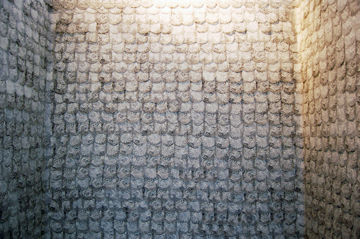
J. Myszka Lewis
To Scale the Walls
Xerox on vellum approx. 8′ x 6′ x 8′ This installation was created by adhering several thousand cut pieces of vellum directly to four walls that were positioned to create a small room with one point of entrance/exit. A lace pattern was xeroxed onto the translucent vellum and the lighting was left subdued. This piece investigated the relationship between interior and exterior surfaces, explored the use of pattern and repetition, and considered the psychology of intimate spaces.
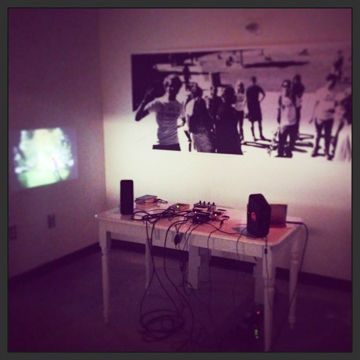
Maggie A. Snyder
Flying/Falling
Live remixes of audio of WNYC’s radio reports of the 9/11 attacks. Recorded via the SoundCloud app for iPhone during performance at Open Studio Days at the University of Wisconsin – Madison, Madison, WI 2013 For Open Studio Days 2013, I created an installation where I performed live remixes of the WNYC eyewitness account radio reports recorded during the 9/11 attacks. The installation consisted of a small looping video of a man running through a park with his arms outstretched like a plane. Behind where I sat manipulating the audio was a 36″x108″ black and white photograph of a 2002 performance piece I was involved in, protesting the treatment of Americans and foreigners under the Patriot Act at the time. For the live remix, the WNYC broadcast recordings from 9/11 were run off my iPad directly into Boss DD6 and DD7 delay pedals, which I used to grab small samples of sound to loop and layer. I also ran the audio through an Alesis Metavox vocoder to degrade and add musicality to additional samples. I plugged my Kaossilator synthesizer into an Octave pedal to give it some depth and grit and made low musical accompaniment to the samples that I was processing live. 9/11 didn’t become real to me until I heard the narratives being broadcast on NPR the day it happened, so working with the sound was very important to me. I like working with analog looping technology because it is so similar to our minds, the way a certain phrase will get stuck in my memory and replay and degrade into noise over time that is still painful to hear even though the specific meaning has been lost. This elements of this installation/performance served as a jumping off point for conversations about how this country has never processed 9/11 culturally, resulting in a lost decade in this country. I discussed with people my concerns about censorship and war surrounding this particular event and people shared memories, thoughts and ideas about the event, the past decade and current politics in this country.

Tina Cady
Recast
This work relies on viewer participation. The viewer is invited to make her/his own story using the books in the basket. Each book contains a unique sentence that can be mixed and rearranged to make a unique story. This work is interested in the remixing of stories and the possibilities of storytelling within the folk tradition of oral recounts.

Jay Ludden
HELLO!/What Does Home Look Like?
'HELLO!' (bottom left) Installation/Performance 2013 Approximately 1,300 envelopes were arranged on a grid in a gallery. Each empty envelope reads “Open Me First”. In the front of the gallery with the envelopes were white balloons with name tags attached. Participants could pull down the balloons, write their names, and attach the balloons to their wrists so their names floated over their heads as they walked around the space. Participants could walk between two walls to a dark space in the back of the gallery lit only with a single spotlight over a chair, on which was a notebook journaling my reflection on the work. 'What Does Home Look Like?' (top and bottom right) Workshop and Sculptural Installation 2013 Kids at the Madison Children’s Museum were asked what home means to them. On one side of index cards, kids were asked to write their name and their age on a Hello! name tag. On the other side the kids wrote or drew their thoughts on home. One kid who was asked what home meant to him said, “everything!” and when his mom asked him how he would represent that, he thought for a moment before saying, “I know!” and writing everything phonetically: “avrefing”. These index cards were attached to ribbons connected to 5 32” gold start Mylar balloons.
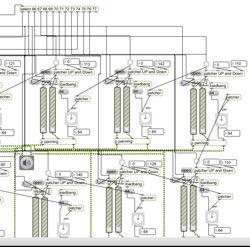
Dale Kaminski
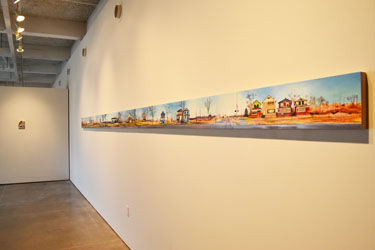
Trina Smith
Slipping Spaces
The painting Slipping Spaces is part of a body of work that is exploring issues of industrial decline and urban decay. In this series I am interested in both what is present and what is absent. I am continuously intrigued by the sense of loss and longing that the abandoned structures portray. In this 19 ½ foot painting there is a rhythm between the houses themselves and the spaces between. Throughout the painting there is a tension between whether or not the relationships are natural or a product of degradation.

Sophia Flood
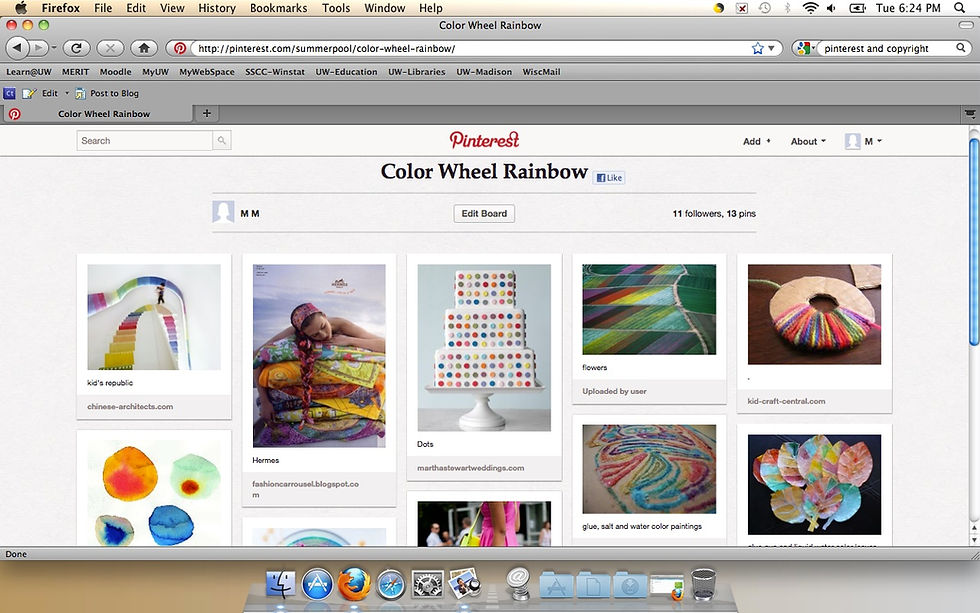
Mauree McQuirk

Niki Johnson
Mover
My work over the past year directly engages the space of what it is to be between places- specifically the experience of the transient, the displaced and the uprooted. Each piece frames a portrait of separation in which place and belonging mix with apparitions of desire. My affinity with material transformation in this body of work centers on issues of fragility and fortification, recasting objects associated with house and home as symbolic agents of crisis.

Andrew Salyer
Andy and Kate’s Dinner Party
Andy and Kate’s Dinner Party was a collaborative project at the intersection of postdramatic theatre and relational aesthetics created by Andrew Salyer and Katrina Schaag. Guests sit around the dinner table enjoying a course of clear, tasteless jello. This two-night interactive live performance event included an eight course meal, live opera, installation elements, plenty of wine, a video projection, and dancing.
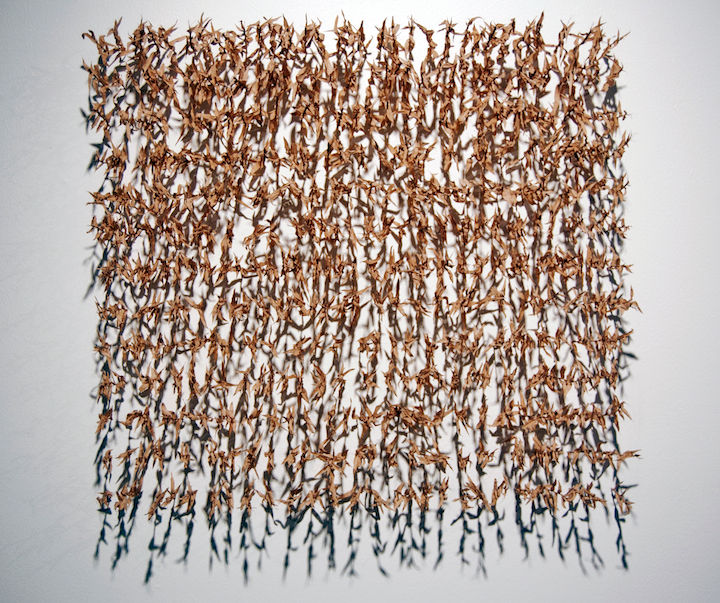
Emily Belknap
Field
Field is a miniature construction of a monoculture corn field seen from the aerial perspective. The individual cornstalks are made of wire, brown paper and string. It is 30 inches square and each cornstalk is around 6 inches tall

Marina Kelly
Holding You in the Light
This image documents the live-art-work, Holding You in the Light a durational work included in Marina Kelly’s MFA Show, Entrainment at the Commonwealth Gallery in Madison in April of 2012. Over the course of three hours, seven young women occupied their own space under their own hanging lamp, dancing to a love song of their own choosing. Periodically, the performers would invite participants into the light to share a song/ dance with them. Some took them up on their offer, some declined and/or simply watched the scene. Some approached the teens, initiating this intimate live art experience.
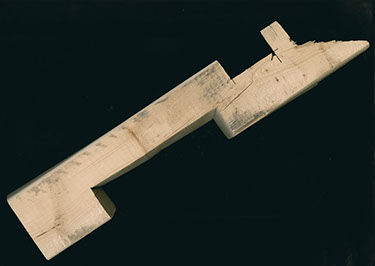
Sylvia Rosenthal
Study #1
Transformation Archive, Block to Bronze 'Study #1' Scan 2012 Narrative Information: This work is the beginning of an archive on material transformation. This block/bit of wood was found in a scrap bin. It is pedestrian yet, it holds a rare exquisiteness. There are not words for its details and cuts that can define its formal composition. This scan is an effort to capture it in this phase of its materiality. It will be invested, burnt out, and cast into bronze. The wood will transform into a semi-precious metal. There will be one chance with much room for error. Will the piece still retain the rare exquisite yet pedestrian qualities? How will it change? Once the piece is cast it will be rescanned, photographed, and displayed on its own as an object.

Emily Belknap
Rescue
The title of this piece is 'Rescue'. It is constructed from a found shoe box, found wood and a motor. The motor is programmed to run on an irregular loop, so that occasionally we here a spastic rustling in the box. I thought of the piece Rescue after I found a chimney swift with a broken wing in my back yard this summer. I put the bird in a shoe box so that I could take it to the urban wildlife rescue center. But the bird flopping around in there was distressing to me; I worried that as it hit the side of the box it would hurt itself even more. This situation is specific, yet its significance can be applied to other, more complex situations. Trying to contain a problem while always worrying the problem is worsening, feeling like the very attempt to help can be damaging; these anxieties are central to many conflicts and situations.

Dominique Haller
Surfaces Study
Video December 2012 This image holds two screen shots of a video piece I’m currently working to finish. All semester, I investigated surface textures of different bodies and materials to understand what they might have in common with notions of gestation. By that term, I mean processes where something still invisible forms underneath a surface – yet its pressure against the surface announces the impending separation of the two bodies. The result of that separation is unknown and awaited with ambivalent feelings of joy, relief, anxiety, and fear. I was led by an attraction to materials and states of being I perceive as “thick”, a term that resonates very deeply within me but that I’m still struggling to put into words or images. Theoretically, I was led by concepts of the formless, the abject, and the fluid, as defined by writers such as Georges Bataille, Julia Kristeva and Luce Irigaray. While this is an investigation that is still underway, this video represents the end of the first phase of this work. It is made of images of my body and images of different pieces that I’ve made this semester. The images are overlapped and treated in a way where the different source materials and their surfaces and textures morph into a new presence that is uncanny yet possesses a human warmth at the same time. Skin comes alive with signs and with friction that we don’t necessarily understand, but that make us respond on a visceral level.
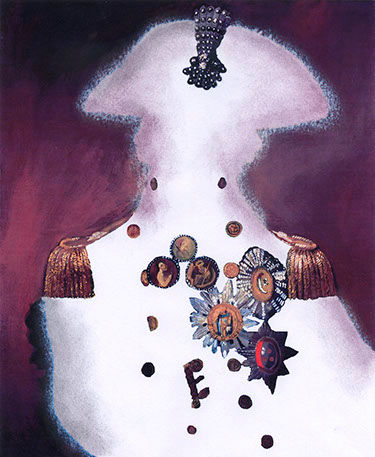
Nic Tisdale
Vacant History #3
2012 'Vacant History #3' is part of a larger series of deleted historical portraits. I am interested in the relationship of the depicted image and what message it is trying to convey to the viewer. By removing the recognizable figure but leaving behind the figure’s regalia, the portrait becomes less about the sitter but what that sitter represents. In this context the role of portrait is less about the historical accuracy of the person and more about the sociopolitical systems they epitomize. The image is a hand manipulated and erased digital ink jet print on rice paper that is 20’ x 24”.
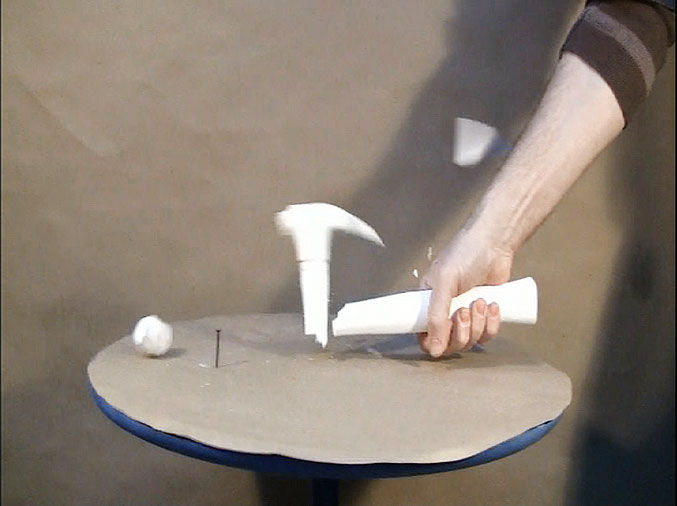
Justin Bitner
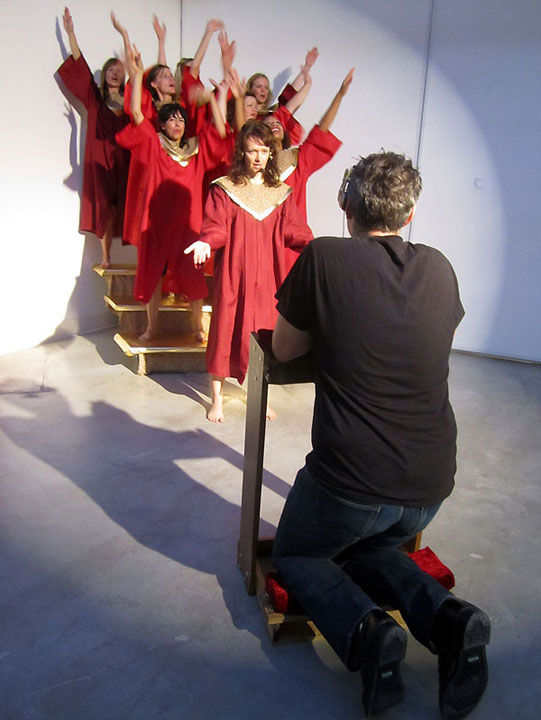
Marina Kelly
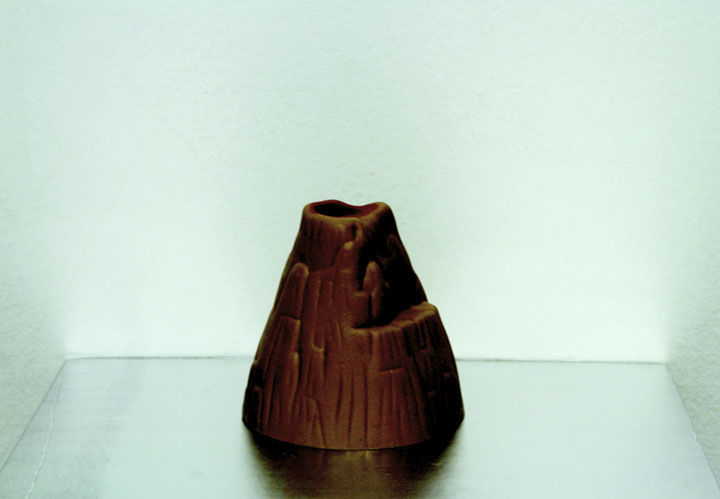
Sophia Flood
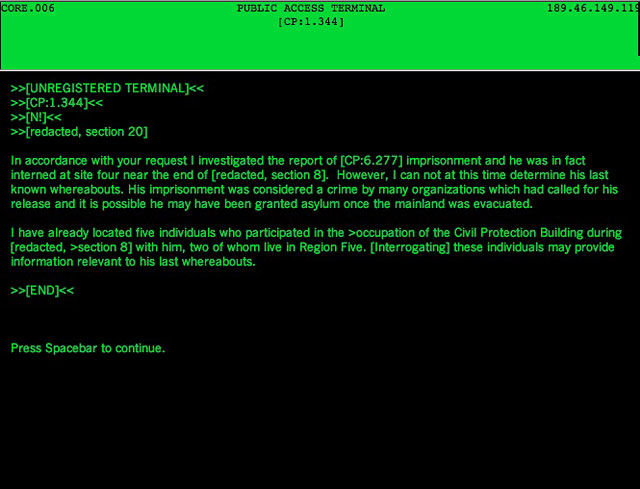
Doug Bosley

Niki Johnson

Trina May Smith
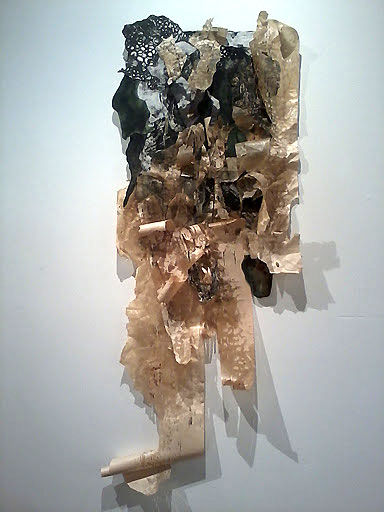
Sandra Anible

Ginger

Jose
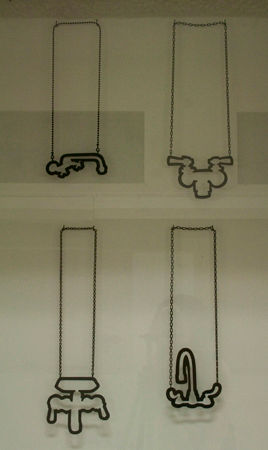
Miller
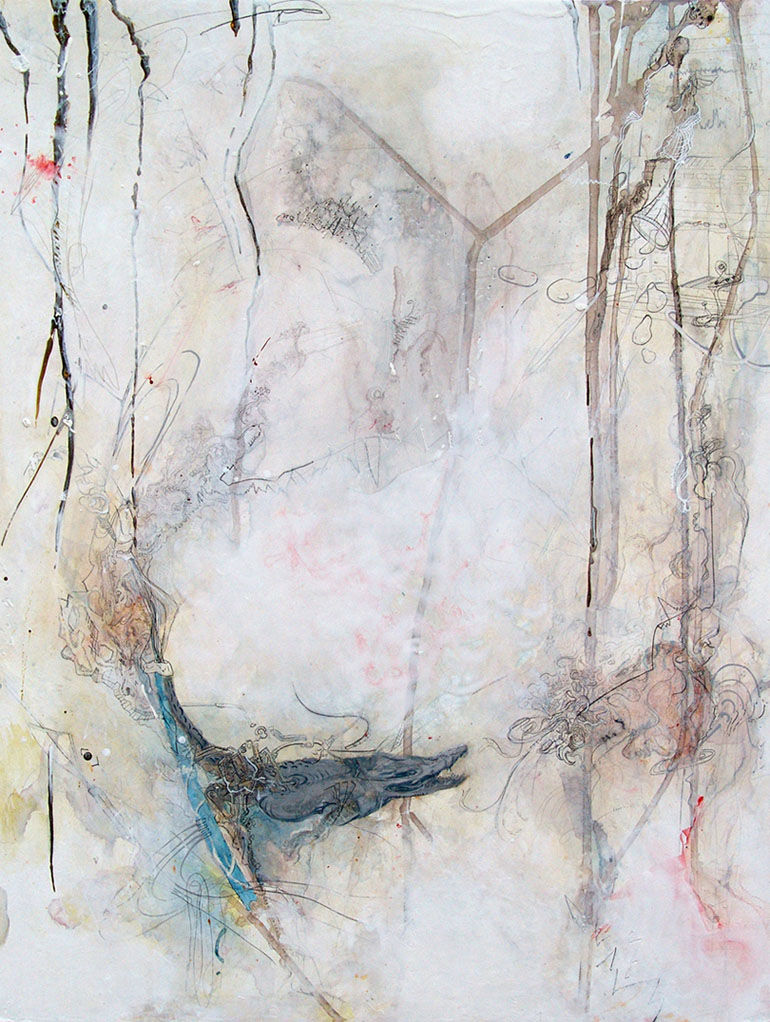
Teresa Getty
the continents
Mixed Media // The attached work is titled the continents. It is mixed wet and dry materials on maple. The dimensions are 18″ x 24″. The work is an intersection of personal experience and history. These images begin as recognizable and are projected or traced from an existing material. Then the work is once more intersected creating a conjunction of real events and my psychological landscape. In this piece in particular, Miranda’s first EEG intersects the crocodile and tiger of Ruben’s painting ‘The Four Continents’. These are then joined with drawings from my interior, creating what becomes the final piece.

Pritika Chowdry
The Bride’s Pleasure
67″high x 30″wide x 26″deep // Fired paper clay, paper pulp, casein and acrylic paint // The Bride’s Pleasure is a sculpture of a kneeling woman masturbating with her back to the viewer. I am interested in orchestrating the interaction of the viewer with the sculpture. This sculpture is displayed facing a corner so the viewer can only approach from behind. In addition, the distance between the sculpture and the walls is such that only one viewer is able to walk around her at a time, thus creating an intimate dialog between sculpture and viewer. If this were a standing posture, she would be seven and a half feet tall.
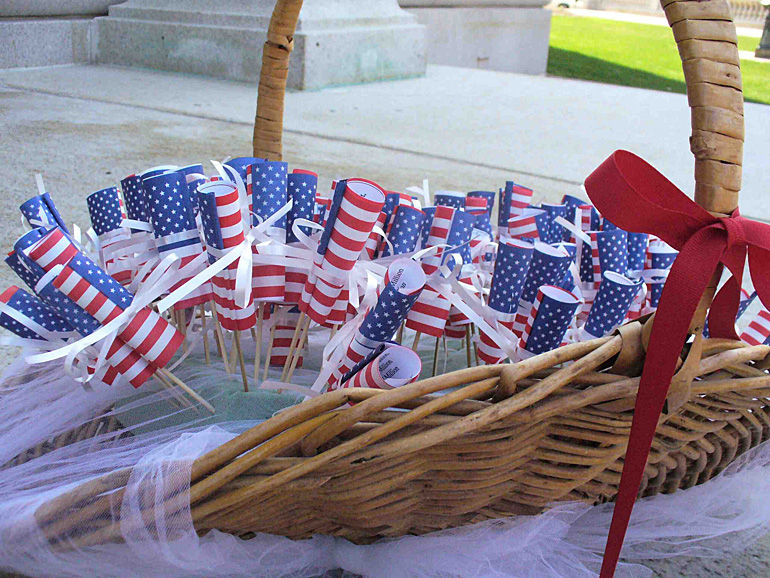
Nicole Gruter
Happy Tax Day, 2007!
This photo shows the tax day ‘receipts’ that I handed out on April 17th, 2007. The paper says the following below and was wrapped in a paper flag, then tied with a ribbon. I handed out 100 of these at the Capitol building and at the top of State St. I am now in the process of editing the film footage Nicole As of April 15, 2007, the Iraq war has cost us as taxpayers: $378 Billion nationally An additional $78 Billion is pending $4,100 for every American household $1,500 for every American $3,400 for every taxpayer $11 million per hour and; $275 million per day. Taxpayer cost to Wisconsin: $7.3 Billion Cost to Madison: $270.3 Million Stoughton: $18.2 Million Janesville: 84.7 Million (Source: National Priorities Project, www.nationalpriorities.org) HAPPY TAX DAY!

Jenny Decarlo

Tara Mathison
Flying: The Oseberg Complex
mixed media (pink foam, glue, glitter, graphite, markers, paint and spray foam)
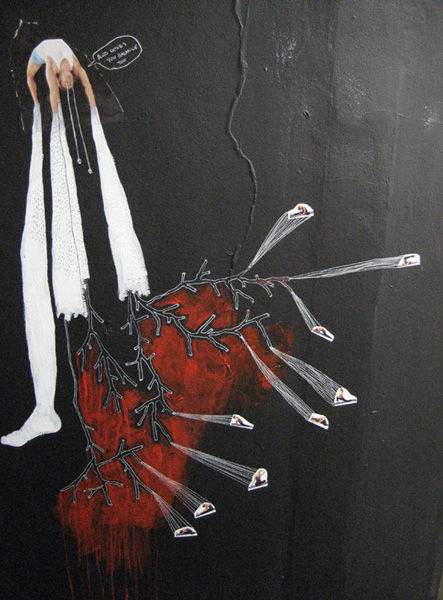
Katrina Riesing
Untitled
mixed media (wall, house paint, collage, sharpie, white-out, ball-point pen, furniture) As I wrote in my evaluation, I wanted to create an experience of art, one that transcended a typical relationship with art by immersing the individual in the art. I am attempting to do this by covering the surfaces of my studio with art work, translating my 2D work directly into, and onto, the space. The imagery within the space is essentially a collage of different references to pop culture, mainly from magazines, that interact, yet often contradict each other: violence and peace, organic and inorganic, public and private. These dualities often resolve themselves in absurdity and dark humor. I became interested in using these pre-existing spaces because of there eccentricities and their built in history, using marks on the wall to help dictate an image or idea. I intend to finish creating this experience by incorporating lighting that will help transform the space even further and also sound.

Chele Isaac
In Media Res
6 Channel Site-Specific Sound Installation // in medias res is a site specific work created for the 2007 Wisconsin Triennial hosted by the Madison Museum of Contemporary Art. The work is located in a hallway that is neither designed nor utilized as exhibition space. Instead it serves as an access point for the freight elevator, stage doors to the lecture hall, a fire escape, and through way to a gallery which was added to the museum layout late in the game. The sound consists of two compositions. One composition is played through 4 surround speakers in the four corners of the hall, and the other through 2 highly focused emitters on either side of a red dot halfway through the hall. The emitters play a loop of straightforward, unprocessed recordings that were made in three distinct situations’ a tap dancing lesson, a cello lesson, and a French lesson. The right speaker plays the call of the teacher and the left the response of the student. This part of the installation can only be heard when standing on the red circle. The surround sound composition is highly manipulated and blends the re-mixed, processed sounds of the virtuosos with those of the building’s mechanical room; the administrative offices; the freight elevator. I hope to imply a narrative that questions how we plug into architectures that create meaning, hierarchy, and expectation.
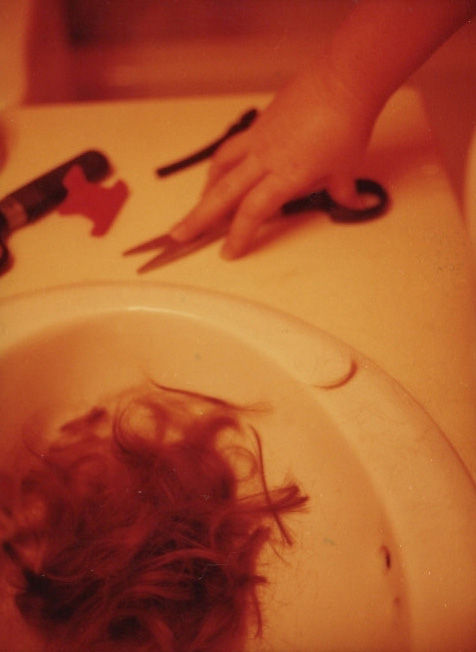
Jessie Eisner-Klyeyle
To the Wilderness Forever / C Print
This piece focuses on the power of a woman’s hair as evidenced in the Rapunzel tale type. While it may seem a very antiquated idea, that a woman’s hair is her crowning glory, I have always been uncomfortable with a woman’s power being associated not with her intelligence, strength or sexuality, but in her hair. We give our children dolls with long hair, we donate our own hair to organizations that make wigs for cancer patients, and we read newspaper articles about violence against women, which often includes an attack on her hair. Is this our power, or is it our weakness? Is it our glory, or our veil? The Rapunzel tale has evolved, and in some versions she is a strong cunning character, in charge of her own rescue but in others she and her hair are treasures to be locked away, and her greatest punishment is when her mother “cut off her hair and banished her to the wilderness forever.” Why does a woman’s long hair become her civilization, while a man’s long hair makes him wild? Is this long hair the ultimate symbol of femininity, and if so, what are we saying about the strength of the woman? *On a side note, I tried to get my hair cut off last week, and the barber refused, saying that she just could not bring herself to cut my “beautiful” hair. I was so surprised that even today, that someone felt such pending guilt over cutting off a woman’s long hair, and I wondered if that was what she felt was the one thing I had going for me.
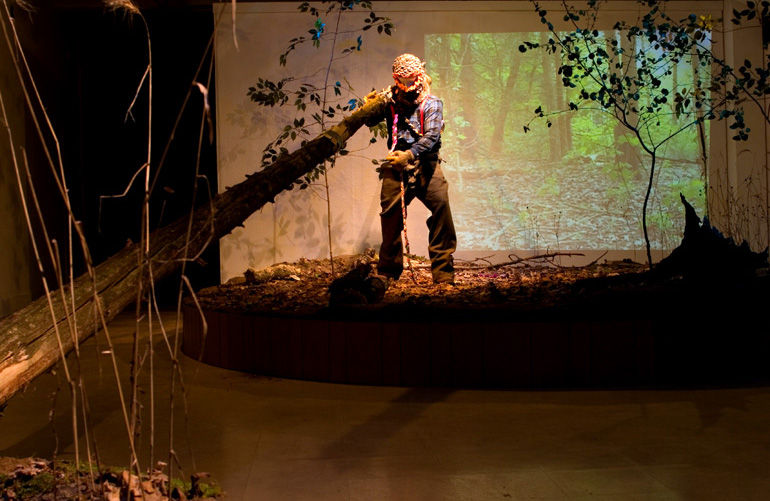
Ryan Burghard
After the Bough Breaks – The Yoke of the Perennial Everyman
multi-media installation Video/Sculpture/Performance. 3 channel installation runtime: 14:30 After the Bough Breaks investigates the construction of masculine identity and the assertion of male practices through ritual. In response to social comprehensions of ‘maleness’ and a feminist inspired debate for gender equality, the contemporary male figure must discern their identity from the disconnect between the male they are, and the male they think they ought to be. Through this re-evaluation of our traditional masculine models, a new approach to the construction of masculine identities has been adopted. By combining symbolic male and female practices with mythological narratives, After the Bough Breaks is a celebration of the new male sensitivity through the reassertion of male ritual activities. Relating the erection of the Dionysian Temple in Greece to the historically symbolic beginning of our archaic masculine ‘values’, After the Bough Breaks retells the story of Dionysius’ salvation at sea and resurrects a new phallic symbol that challenges established notions of masculinity. Celebrating the fallibility of our past ideals, the protagonist exhibits a range of traditionally male and female techniques in order to construct and deliver a new tower representing the fusion of our salvation for ‘maleness’ and our adoption of a new identity.

Katja Marquart
Minolta DSC
This image shows a view from the main point of entry into two of the exhibit pathways. The fabric wrapped column is located in the top left corner. The main path design features a spiral leading to the central column area. This immediately engages the viewer into a longer part of the exhibit paths. The far path is meant as an “observation” path, where walking requires less commitment from the viewer. The floor material is asphalt paper and the paths are defined with vermiculite. The lights are used to dramatically light parts of the path and are set low on the floor to wash over the landscape and highlight the texture and a play of shadows.

Erin Jones
EXQUISITE CATASTROPHE
Mixed media // Ready made furniture, chicken wire, newspaper, plaster, craft paint, house paint, glue, artificial flowers, aluminum foil, saran wrap, electric lighting… This was a large scale sculpture made on site at the Commonwealth Gallery in Madison, WI in January 2005. The original intent was for a sort of botanical/organic/waterfall monstrosity, the result leaned more towards the colors and shapes that make up my memories of annual visits to Disneyworld as a child. I distinctly see elephant and castle shapes in the final sculpture.

Ryan Burghard
Untitled
Digital Photograph // Mask: Yarn, plastic, elastic // My recent work investigates the definition of sexual orientation and classification through adornment, prostheses, and cultural ritual. My masks become a catalyst for characterization to occur. The models assumption of power, vulnerability, masculinity or femininity, makes for an exaggerated sexual identity that blurs the lines between excepted sexual cues and creates a narrative for defining sexuality that is more complex, diverse and androgynous. Both liberating and controlling these masks force their wearer to deal with their own understandings of sexuality and how they choose to define themselves within it.

Piper Vollmer
O Ecclesia, Oh Baby
9′ x 7.5′ x 4′ Insulation foam, string lights, meringue icing, paint, glitter, Barbie Dolls, wood dowels, adhesives. // The pieces pictured are all part of a series entitled “Miserere for a Megachurch.” They are mixed media sculptures that deal, each in different ways, with the marketing methodology of American Protestant Christianity. “Bloom, Teen Bible for Girls,” the first in a series of four, tackles the repackaging of the Bible for specified audiences and the assumptions about both product and consumer that such repackaging makes. “O Ecclesia, O Baby” is an attempt to question the validity and effect of marketing the church. The piece recasts the Biblical and art historical female personifications and figurations of the church. The piece “Miserere for a Megachurch,” is at present in progress and will eventually form the heart of an installation that will complete this series.
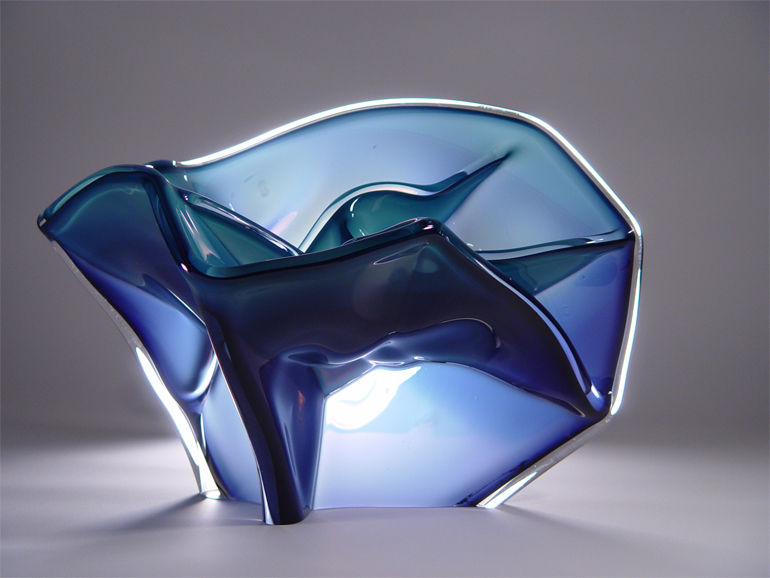
Quincy Neri
Nebula Extraction (Oxygen)
Blown Glass 18″ x 8″ x 16″
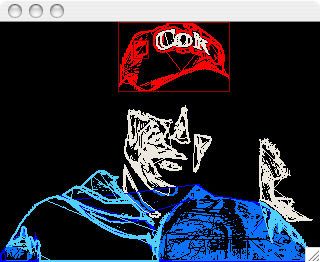
Kael Greco
Everyday Life of Objects
For my independent study I planned on working on a few new pieces and Everyday Life of Objects project. I was primarily interested in creating some sort of computer vision software; A program to read in web-cam images and distinguish various objects based on color. It will read and display up to four colors write now, without any significant slowdown. I’m very happy with the results- it’s not quite what I anticipated, but I love the complexity of the output. I spent a significant amount of time just setting up this whole system, so one of the more substantial performance pieces I had planned was put on hold (until mid-june). I decided to make a simpler piece based on the camera tracker. This piece was just finished Saturday. I’m pleased with it, the images don’t look that great, however. The camera continuously tracks the movements of these Lego characters as they float through the water. I was worried that the Lego people would remain motionless, but they do float; and the effect is very hypnotic. I think the over setup needs more consideration. I’m planning on finding a better place, and documenting it well within the next couple of weeks. I spent the early part of the semester working on ELOO. I wrote a lot of code to optimize the viewing (so that only objects within the view frustum would be drawn). This will make the whole program run a lot smoother. Things were put on hold until the purchase of Deep Exploration, so that the textures could be exported without difficulty. Within the last week I finished the basic code to read and write targa image files (which support alpha/transparency). Now the textures need to be applied to the planes and displayed. I’ll be working on this next week. I feel like if I sit down and focus on it without distractions I could get it done. After all of the texturing we can try some sound tests.

Sarah Miller
Shaken Naked
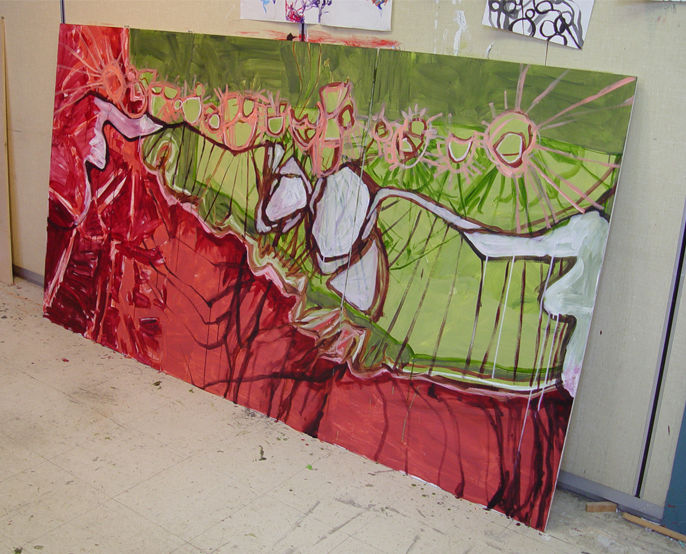
Kate Bright
3279
3279: (Three paneled) Unifinished, reds and greens with dark brown gestural lines, and white forms, 4′ x 8′
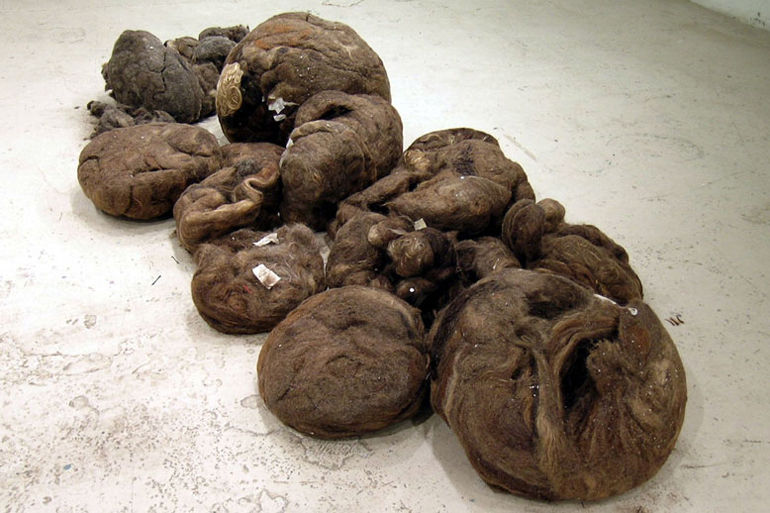
Cedar Marie
Plot
Mixed media // Plot utilized a farming implement, the hand plow, to explore the cultivation of the body. It references language and story, death and renewal. Hair grown over the plow and the plow position, which is neither at the beginning nor at the end of the field, suggests both a halted or abandoned activity and a continuance of time.
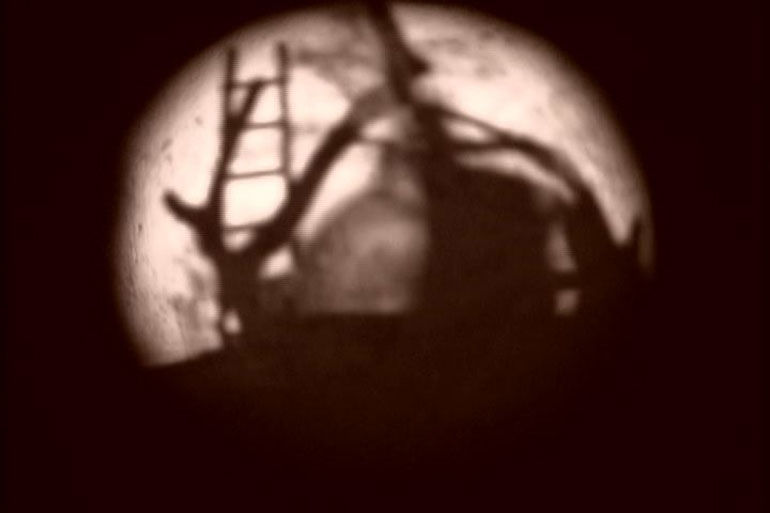
Chele Isaac
The Road That Takes You There is the Road That Leads You Back
This short film is at once a finished piece and a stepping stone within an ongoing body of work that contemplates what it means to self-consciously face one’s position in the continuity of time. The work employs the contrivance of shadow play to both imply the impermanence of memory and insinuate the necessity of belief in some sort of reality. Shadows of iconic images drift in and out of focus, overlap, fuse, and separate from each other. The diorama is a tableau of starkness- cut power lines, a skeletal Conestoga wagon, a ladder leaning against a tree that bears no fruit, empty vessels, and a hollow figure. A vignette frames the procession and heightens the theatricality. It becomes a keyhole through which we have voyeuristic access to what might be a snow globe of a fantasy world or the Petri dish beneath a microscope. This scrim separates the viewer from the environment, however the opening inculcates a desire to enter, anticipate and reflect.

Cedar Marie
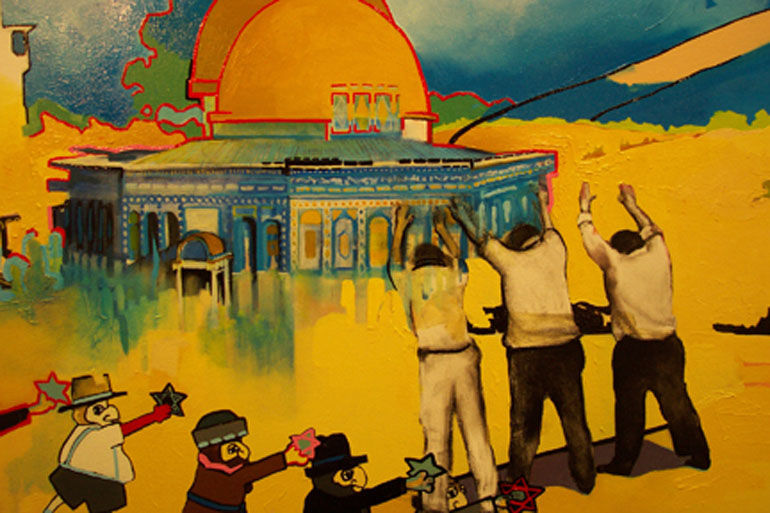
Julie Weitz
Untitled
The smaller painting, 2 ft x 3 ft in size, depicts the contrasting landscape of an ancient, religious site with a modern, secular city. In between these places, generalized figures drown in the sea, Hassidic flies swoop around the space and two helpless, bagged hostages lie in the lower left-hand corner of the composition. This work, like the previous one, sets up a landscape of chaos and tension. Both paintings avoid strict dialectical interpretations, simultaneously evoking an image of what, as Americans, we see, imagine and are not supposed to see in the territory of Israel/Palestine.

Christina Rosa
Works by Cristina Rosa
This series of images were taken from the final project in my Independent Study class with Laurie Beth Clark. 'Works by Cristina Rosa' was an one-day exhibition set on Monday, December 8th from 7 in the morning to 7 in the afternoon at the 734 Gallery at the University of Wisconsin, Madison as part of my MA program in Fine Arts. The exhibition is the result of my recent research on the relationship of food, color and aesthetic in the African Diaspora in general and in the Afro-Brazilian culture in particular. Although most of the studio work was developed in Honolulu, HI, Madison, New Orleans, Bras*lia and Salvador (both in Brazil) were among the cities I visited while gathering material for this research. The exhibition, which images I display here, included digitally manipulated images, traditional printmaking (on fabric), paper folds, as well as on-the site cooking. The viewers are invited to experiment the exhibition, to see, to touch, to smell and to eat it. The idea was t transform the undifferentiated space of the gallery into a personal medium to talk about the issues above and give the view a chance to experience it and deduct from it directly.
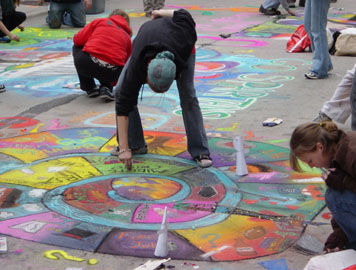
Megan Lotts
SPACE
This image is from Madison CitiARTS show titled from 'SPACE' that was up for November and December 2003. The show was my first give away/take home art show. Throughout the duration of the show I roughly gave away 1000 plus works, and received much exciting feedback. This particular project has opened a new door for me to explore as an artist, and have liberated myself as a created and prolific maker. I am obsessed with the notion of making the ordinary extraordinary. I take everyday thoughts and ideas and translate them into visually stimulating works using a set of rules, symbols, and my own “mental rolodex”. My current series of installation work focuses on the ideas of architecture, space, and self obsession. I think of my work as being a constant “diary like” series of self portraits. This installation focuses on the idea of proliferation and disposable/take home art. Please choose from the collages and drawings on the clothes line and take your favorite one home, to a friend, or merely a new space.

Anna Campbell
My most recent sculpture in progress is a nostalgic embracing of the aesthetic of pre-Wright Brothers aeronautics to talk about/romanticize the stubborn hope & naivety that was shared by the era’s designers. Working on this project led me to the unexpected and slightly uncomfortable realization that the similarities between my work and theirs are more than formal. I have been transformed into (or was I already?) that same stubborn and naive tinkerer, with only a historical gap to separate us. The parallels are these: the emergence of aeronautical technology and my emergence as an artist, especially as I am learning a new media; the ambition of being able to put people in flight, and the difficulty of negating my audience’s sense of the commonplaceness of flying; their fascination with experiencing the sensation of flying and the ability to fly that they did not know to be attainable, my attempt to activate a sense of wonder and longing surrounding that sensation and ability; and finally, in both cases, the personal interaction and relationship established with an object during its construction, which involves creating both form and meaning.
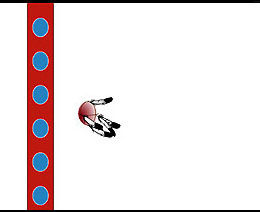
Richard Martin
Screen Shot 1
This image shows the Medicine Ball. In the actual scene, the ball moves left and right, colliding with the red wall. If a user clicks on the red bar, the ball continues left (westward) beyond the wall and begins the journey.

Jenny Maastricht

Peter Zylstra
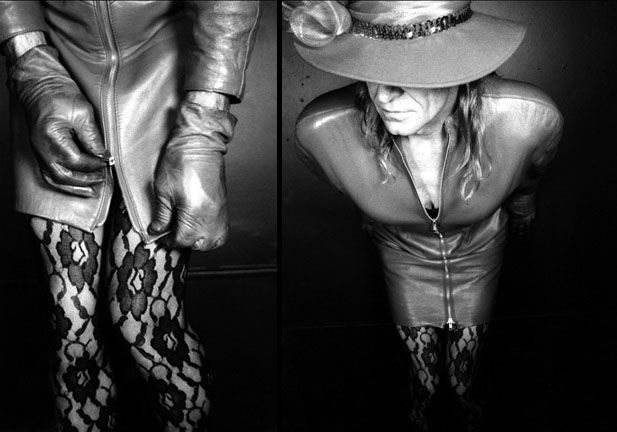
Jenny Price
Trans-Femininity
For more than three years, I have been documenting and gathering audio, text, visual research and data towards my MFA degree. This work, entitled Trans-Femininity, confronts and questions societyfs standards and expectations in relation to gender, identity, and societal roles. In addition, I apply unexpected use of color to evoke emotions of pain, anger, strength, sensuality, pleasure, and the conflict between assigned and desired identity. This work documents people of all schemas, their way of life and visual transformation of their idealized image of self.

Rachel Melis
Hunter/Gatherer/Collector
Visitors to my show at the UW-Arboretum are encouraged to “arrange, rearrange and play with the pieces” of this installation. The pieces are etchings printed on various kinds of papers and mounted onto squares of matboard. Each square is 1.5 x 1.5 inches. The squares rest on brackets I glued to 4 x 2′ pieces of plywood. Rooted in stories of how people I know experience nature, readings about the hunter’s “field” of vision (as opposed to the tourist’s linear perspective), and the love/hate relationship I have with various kinds collections (especially scrapbooks), this piece addresses the way our experience with a place is defined by how we perceive it/what we look for.









